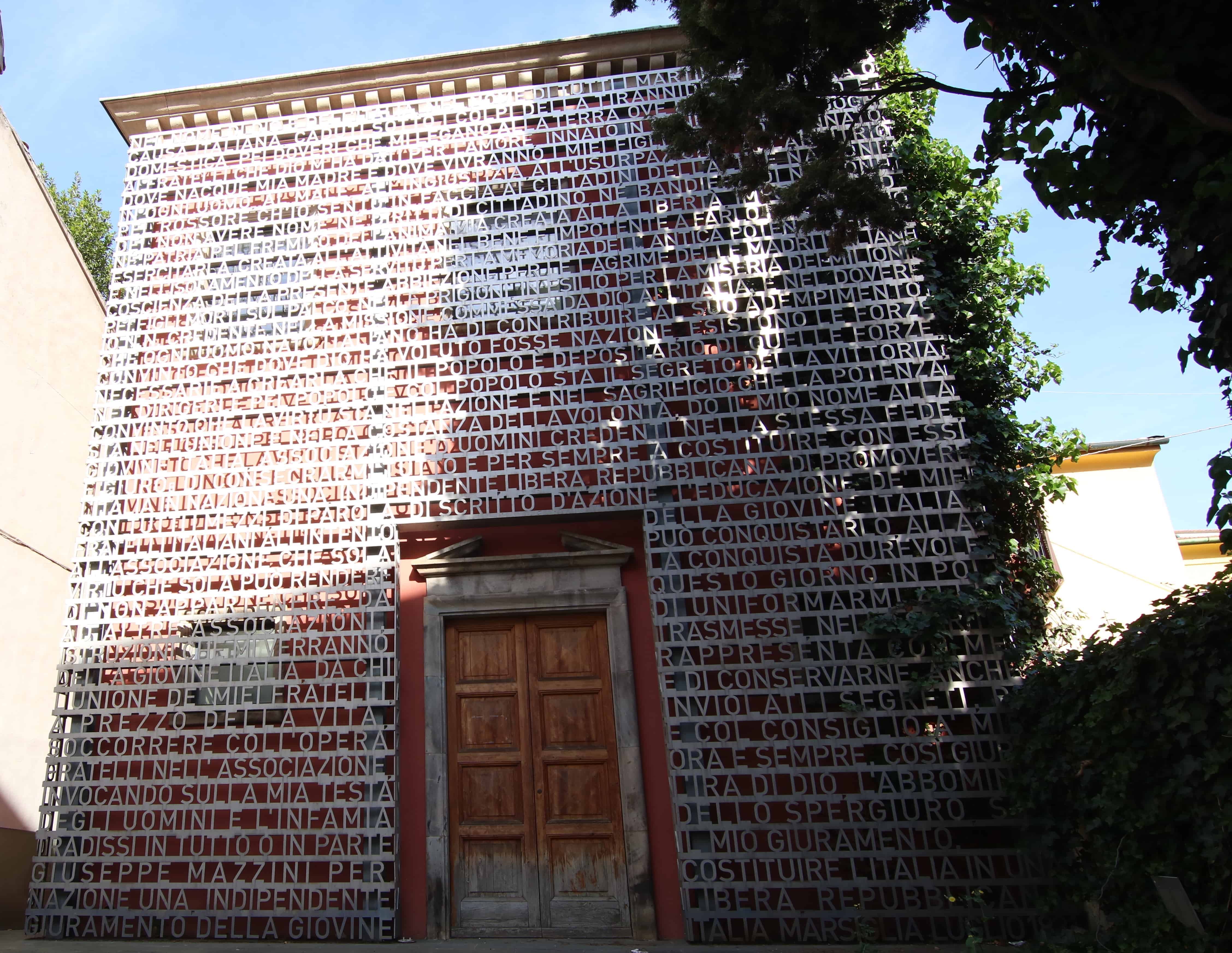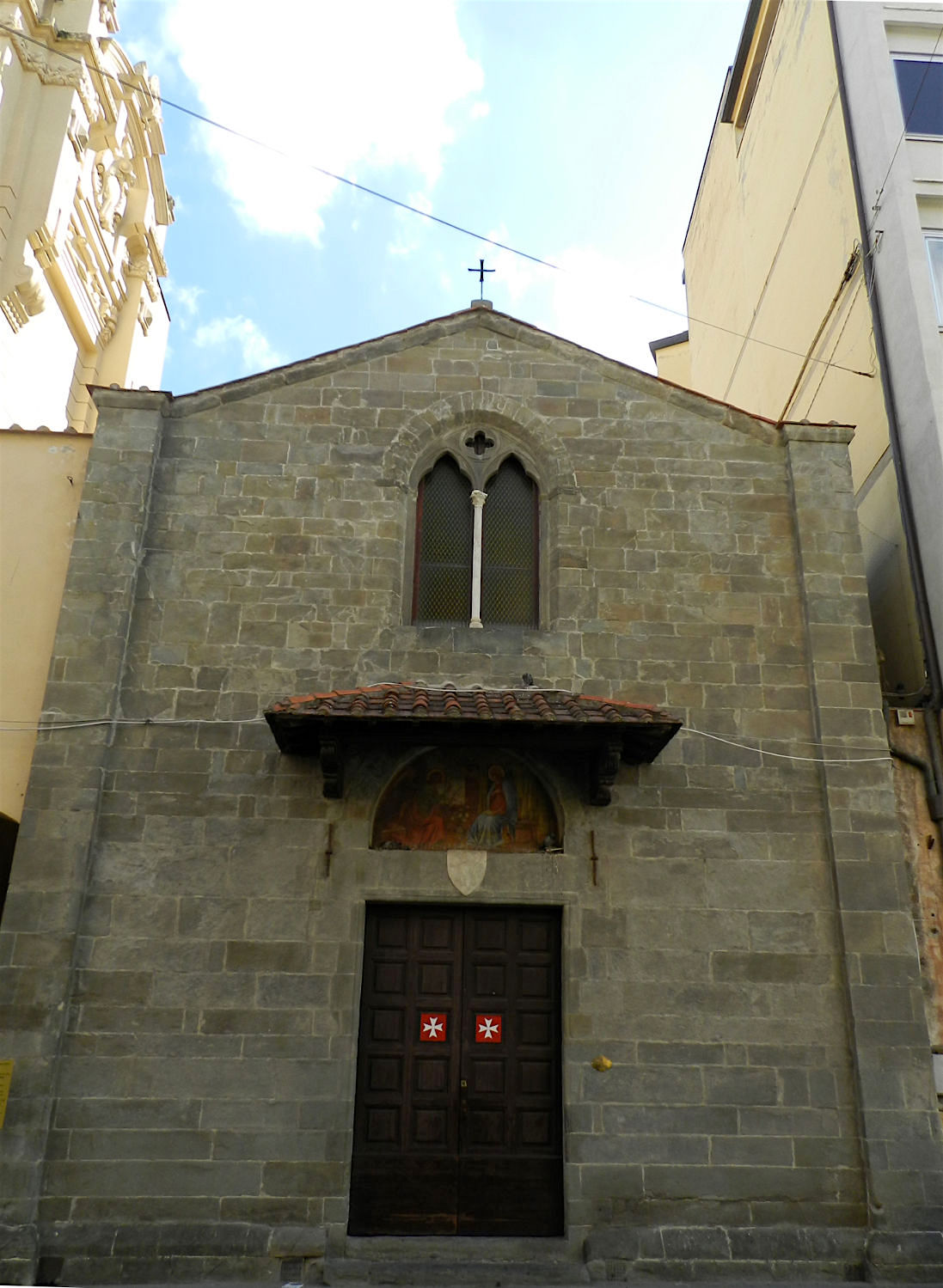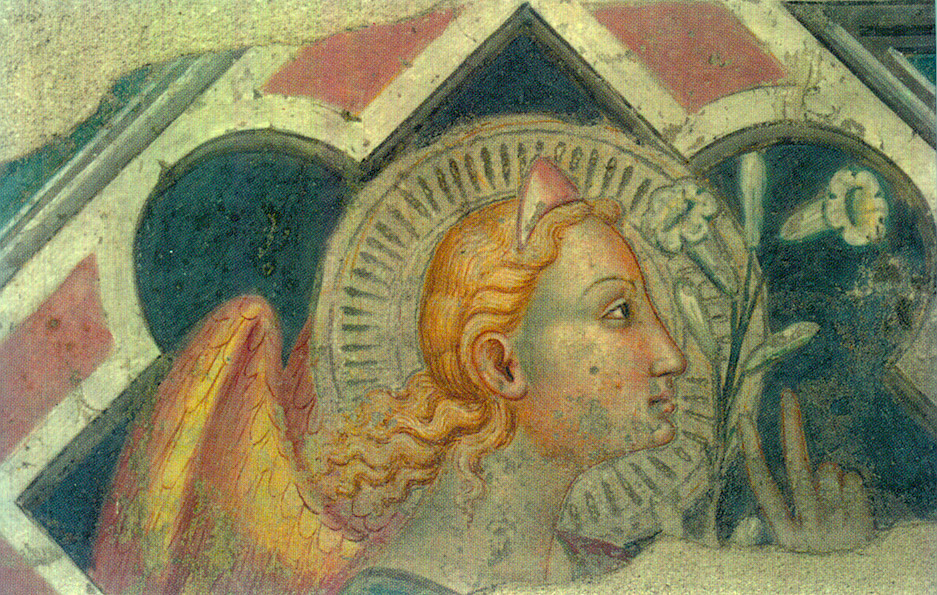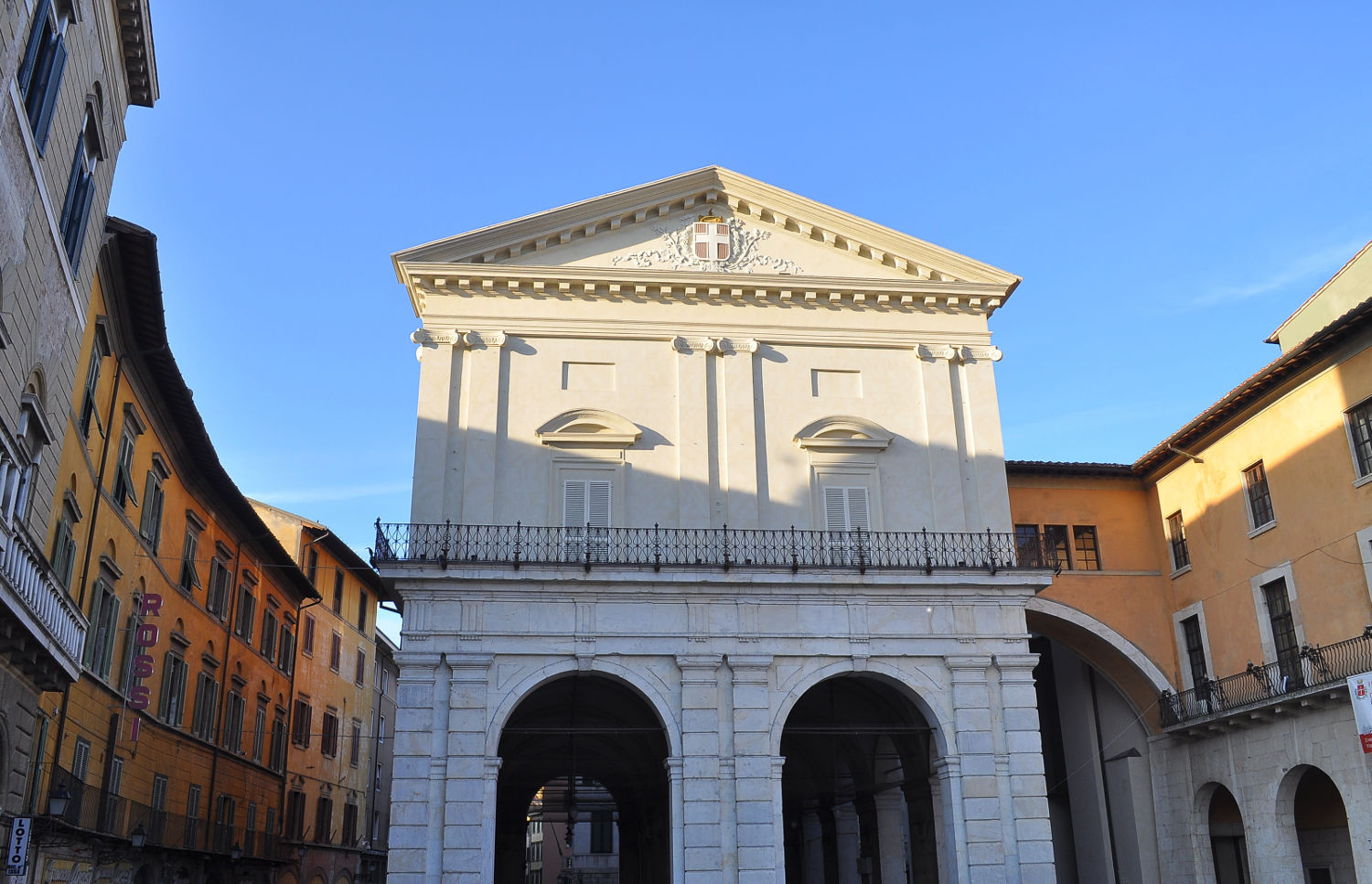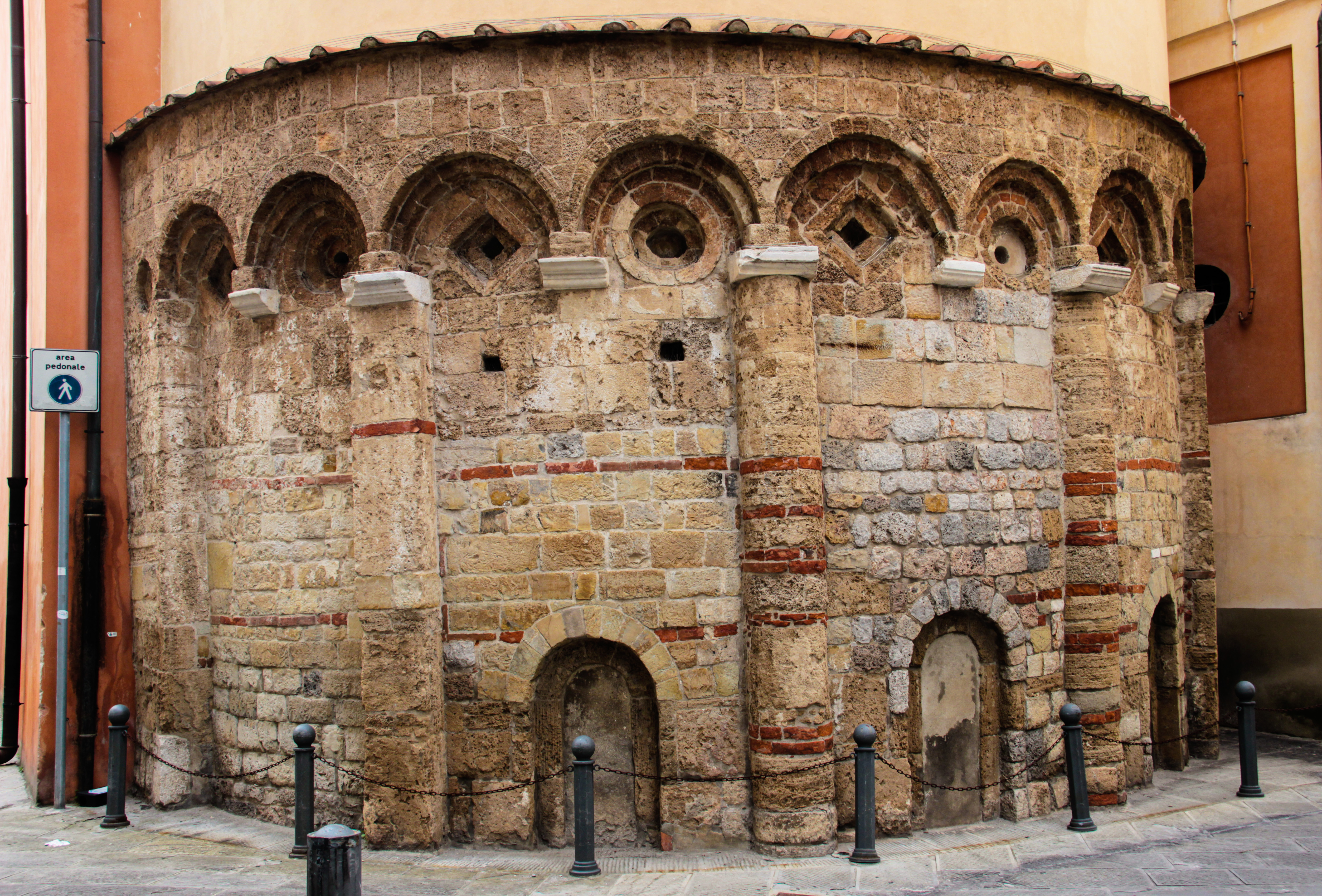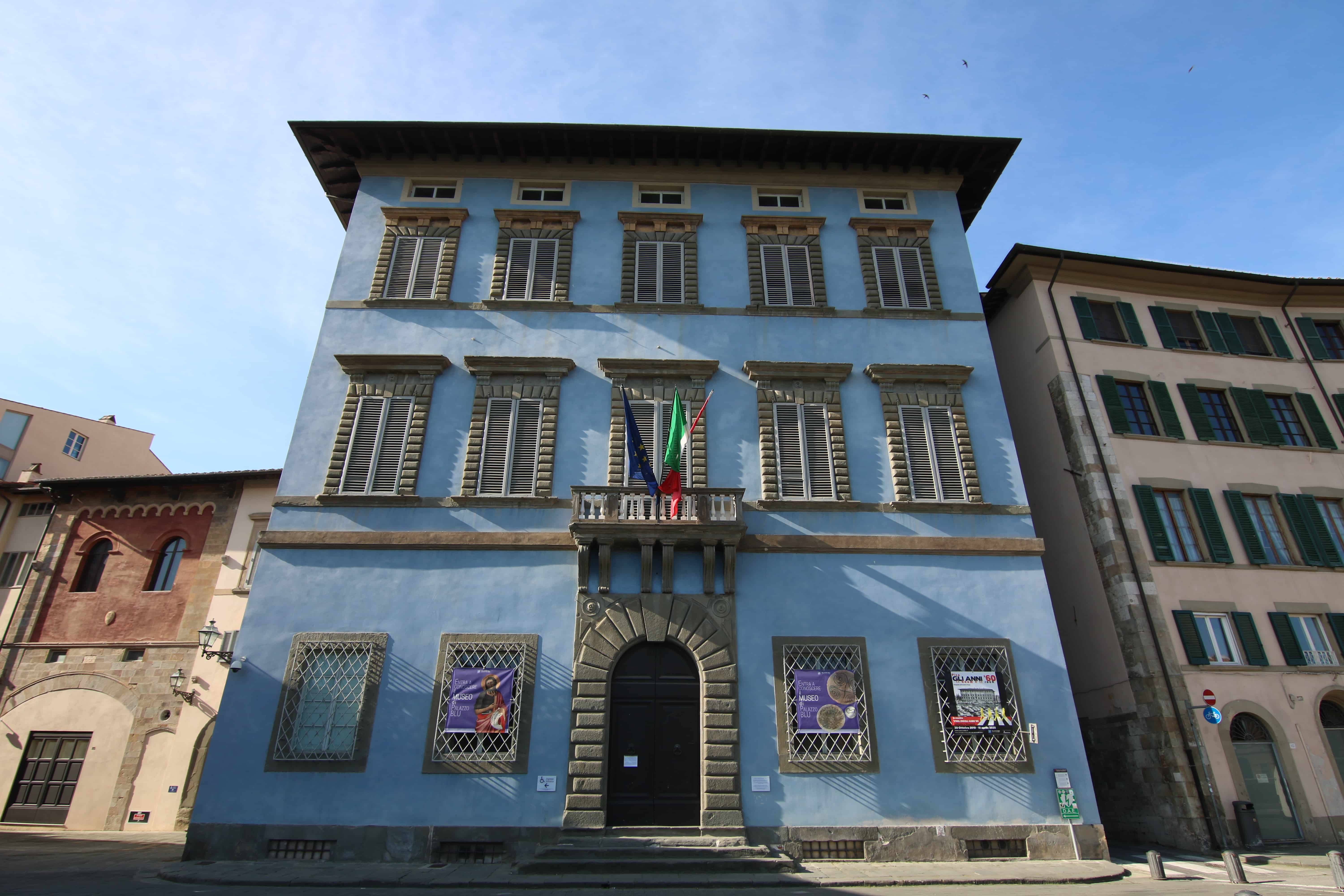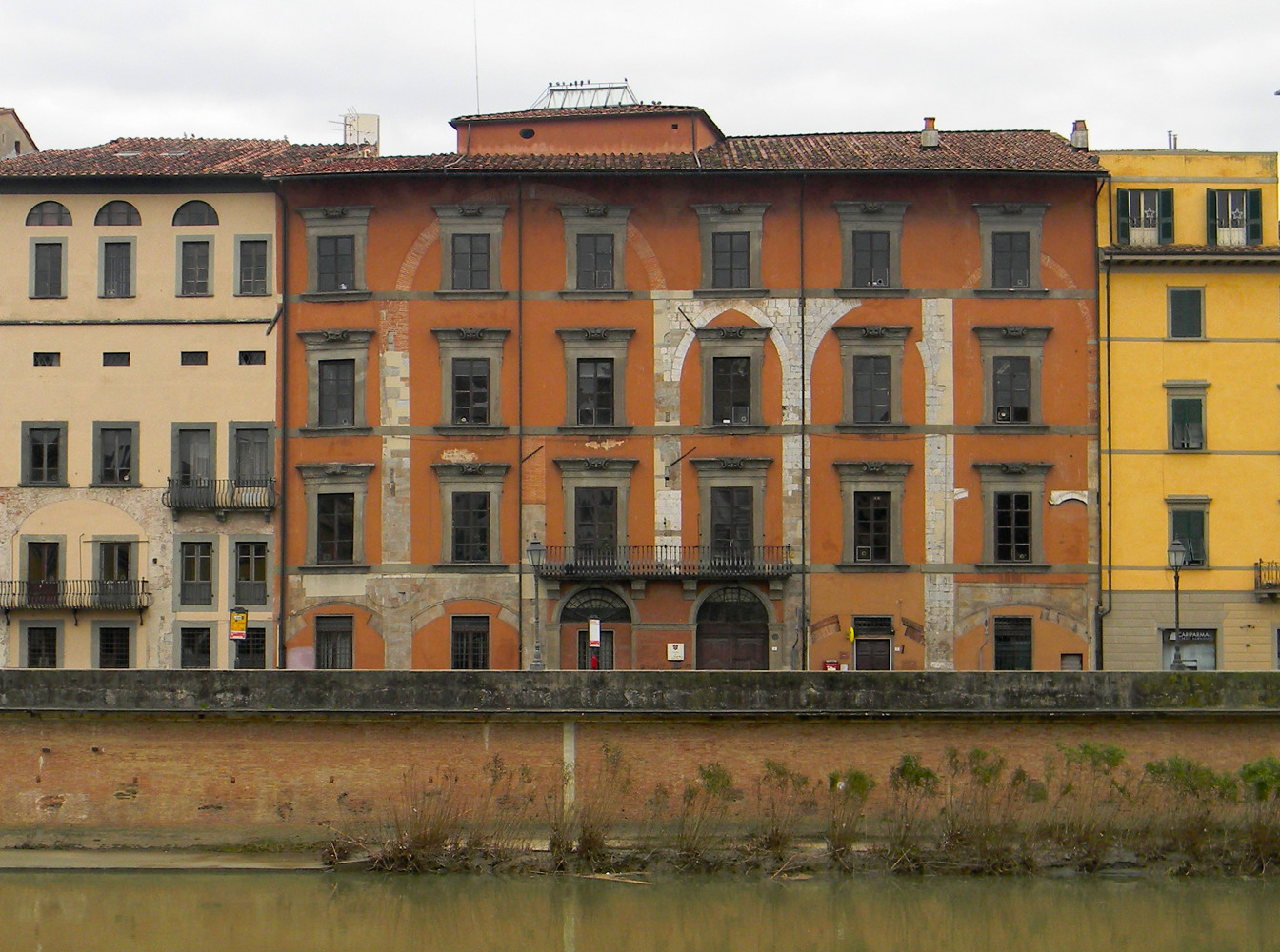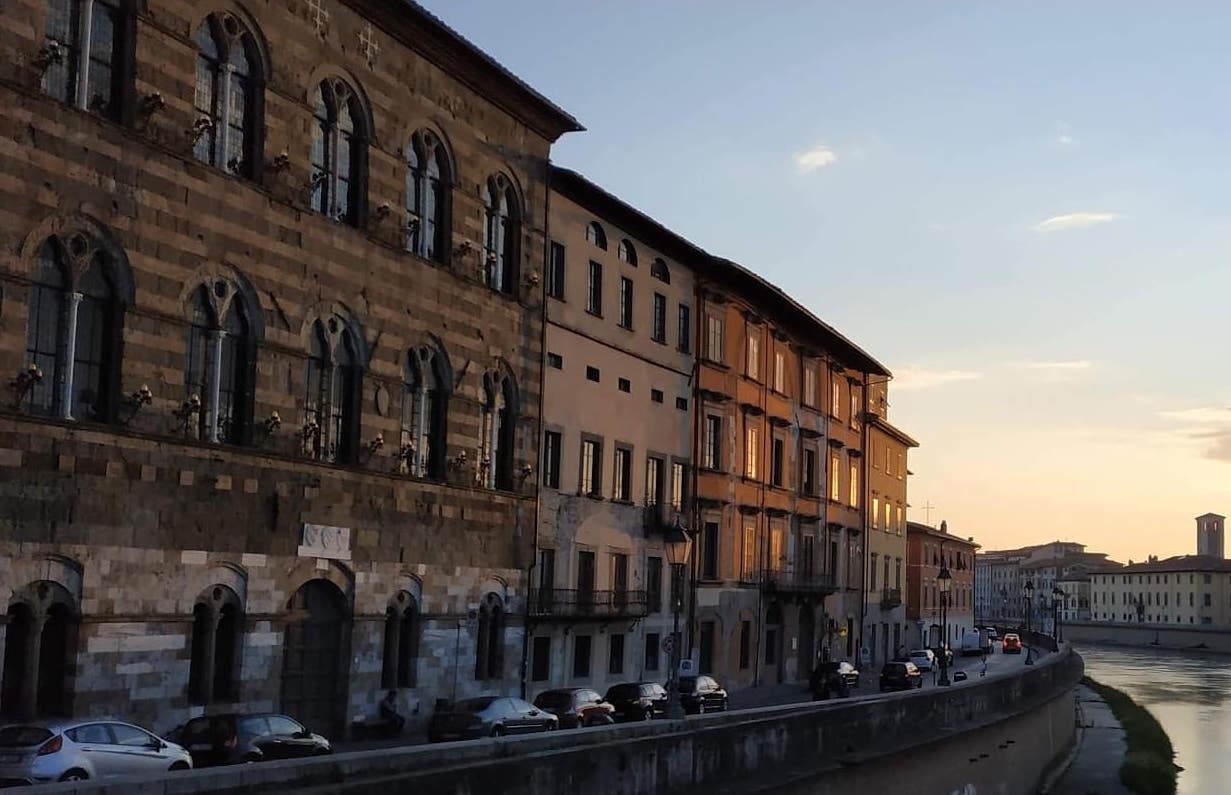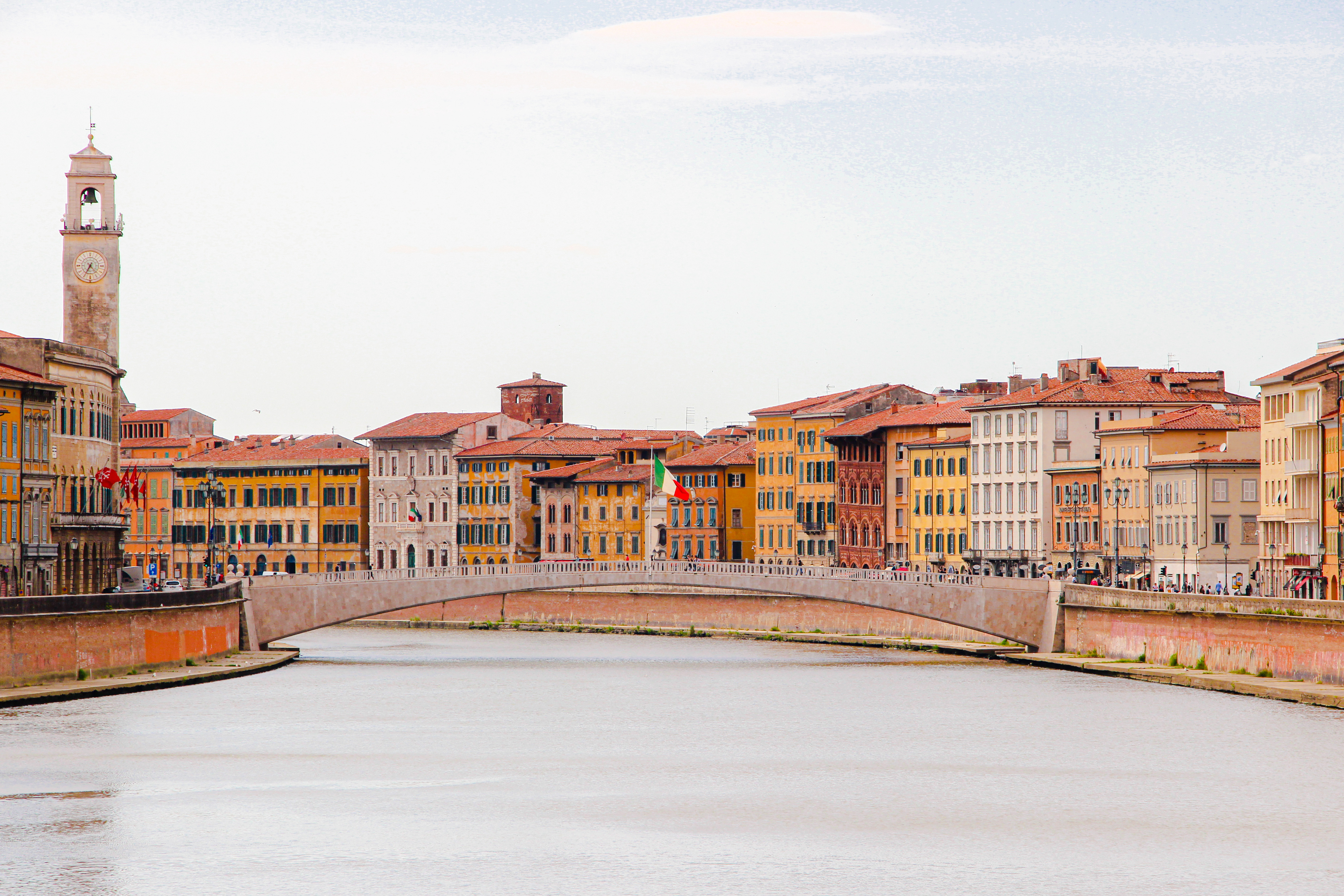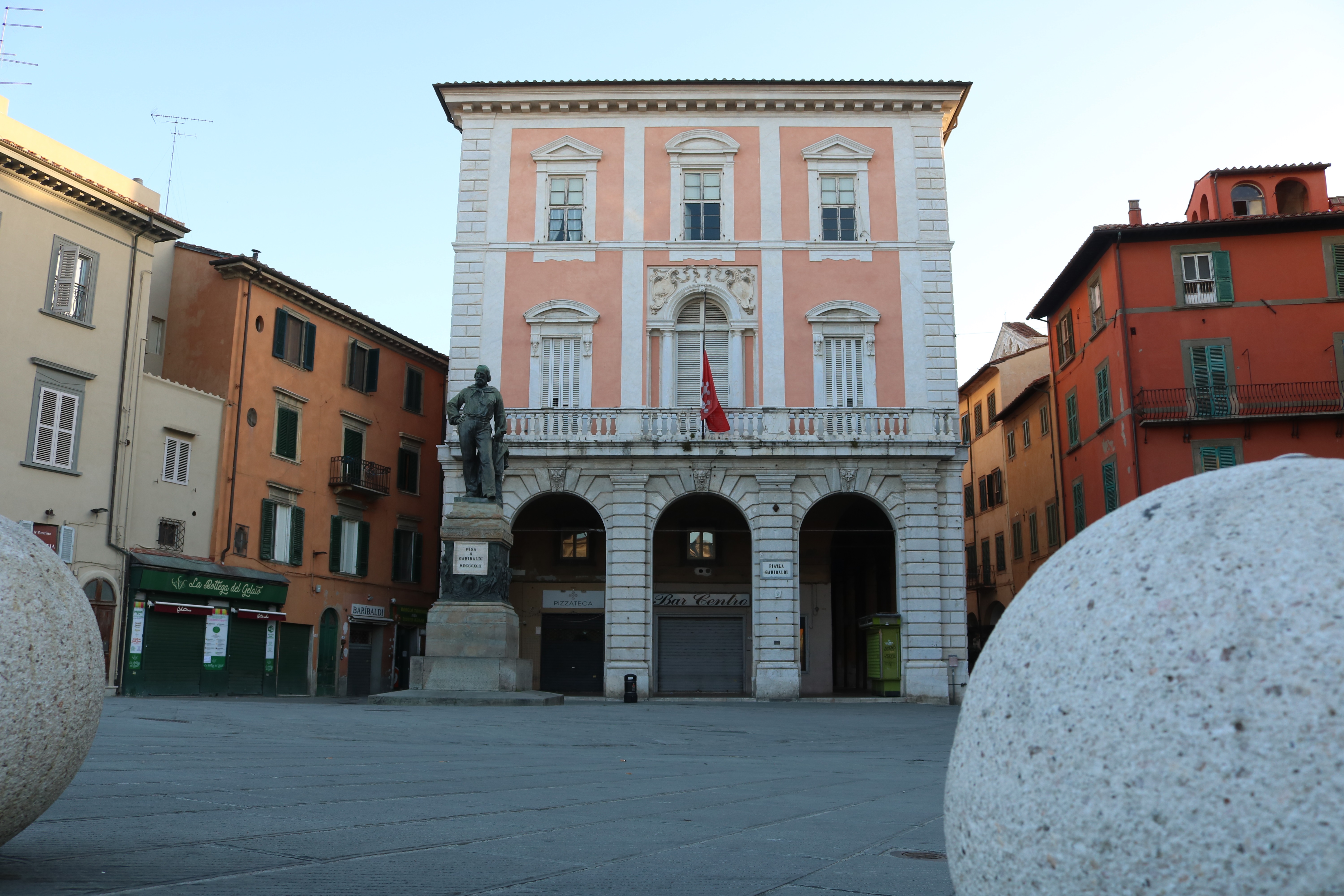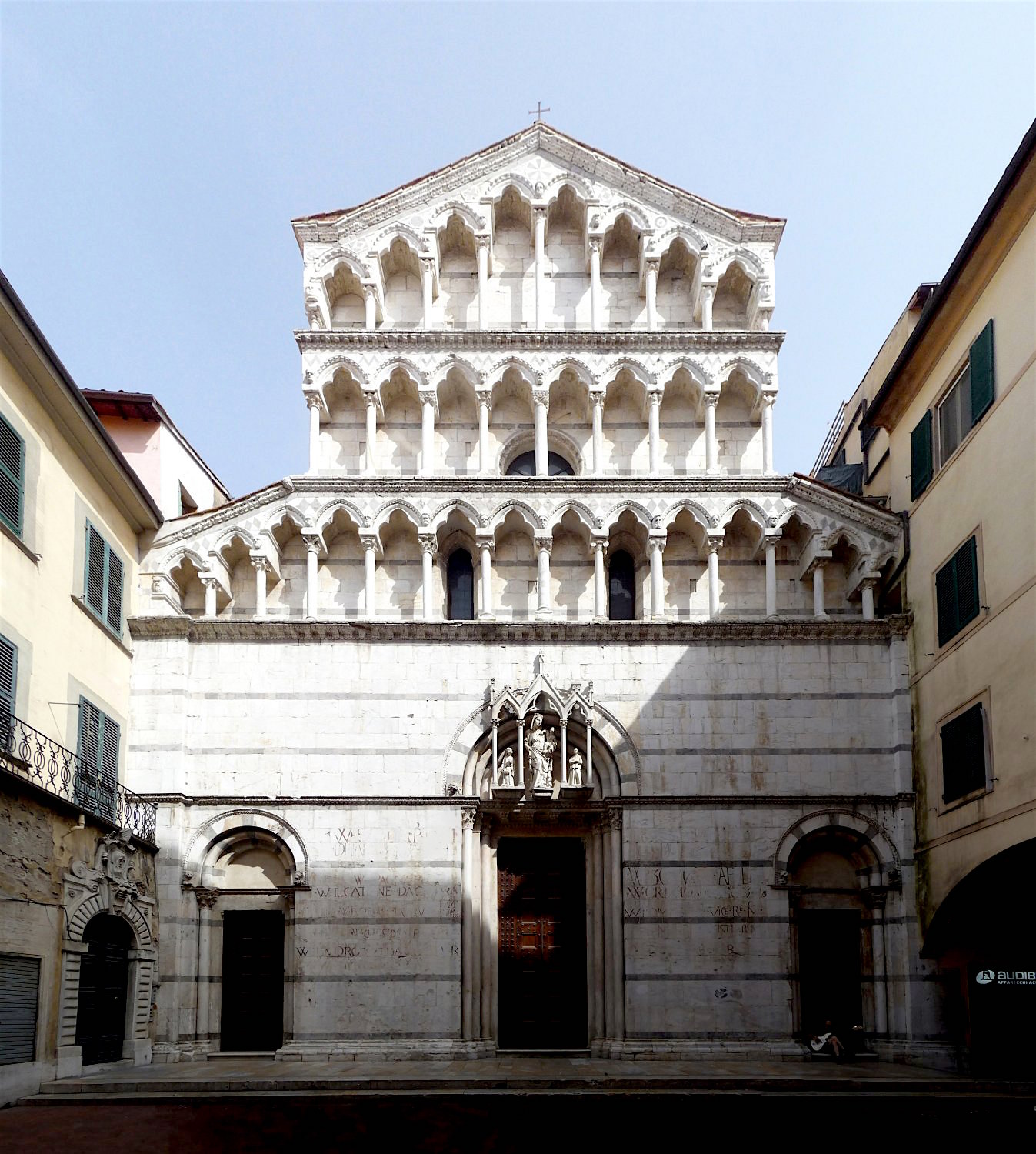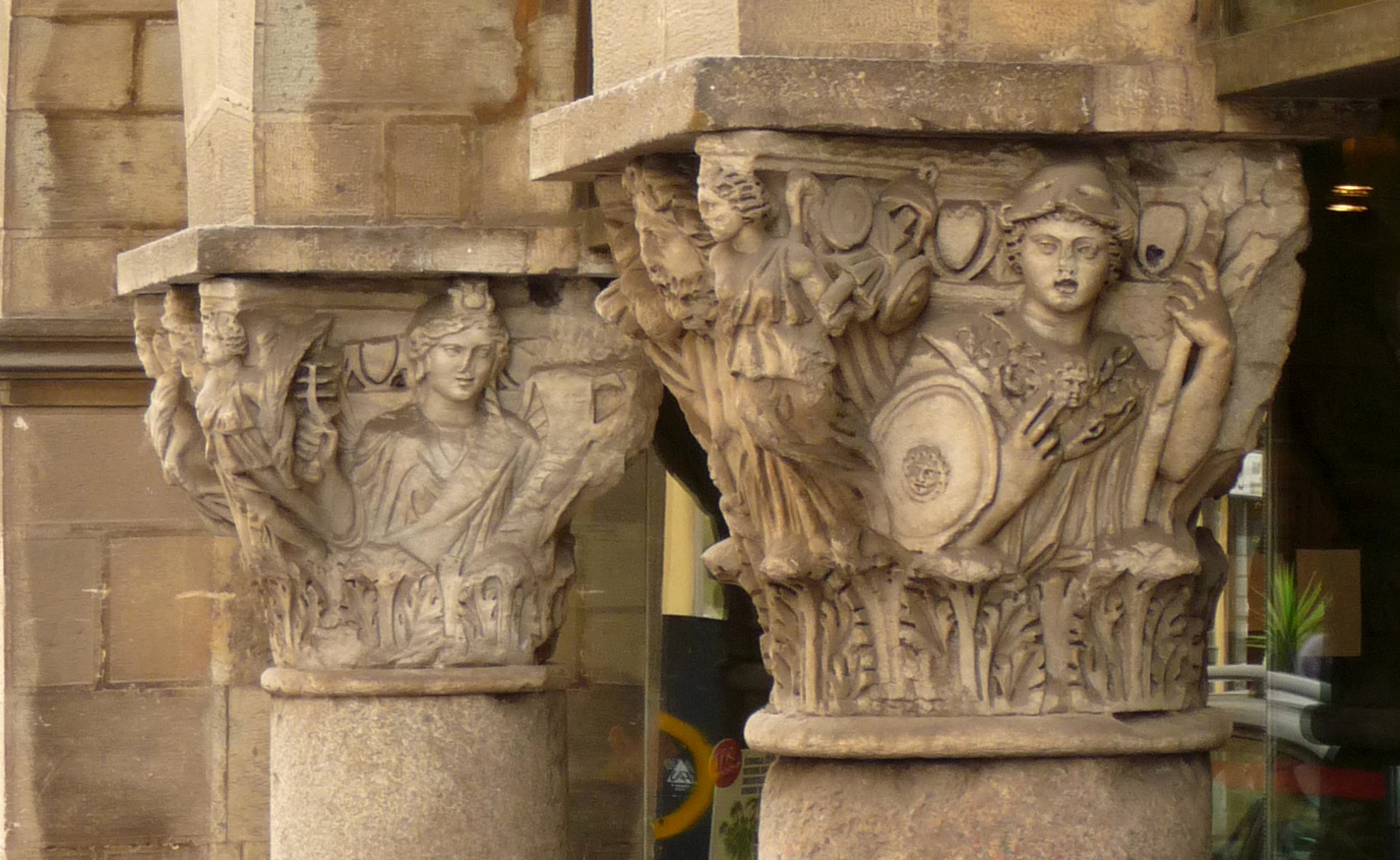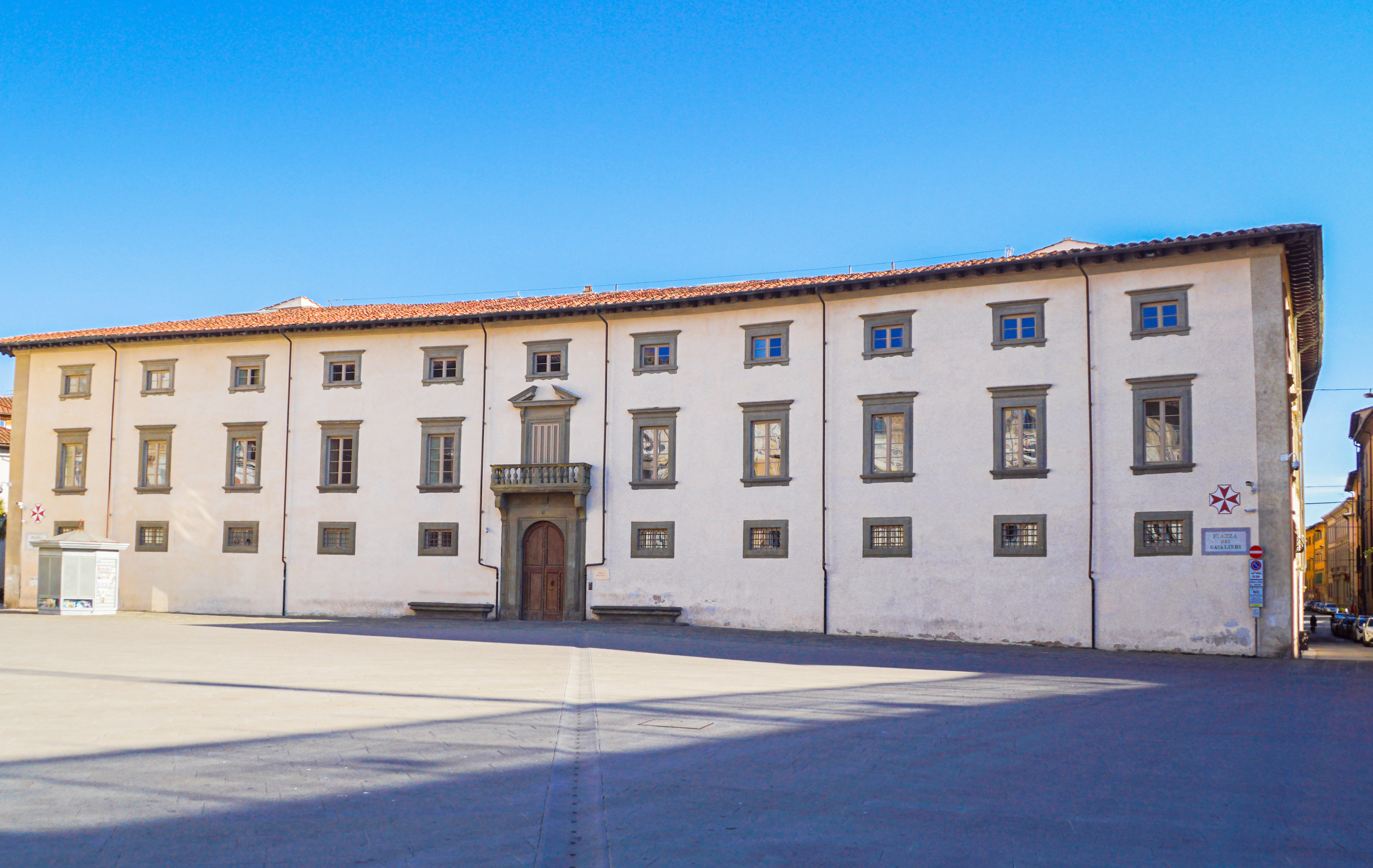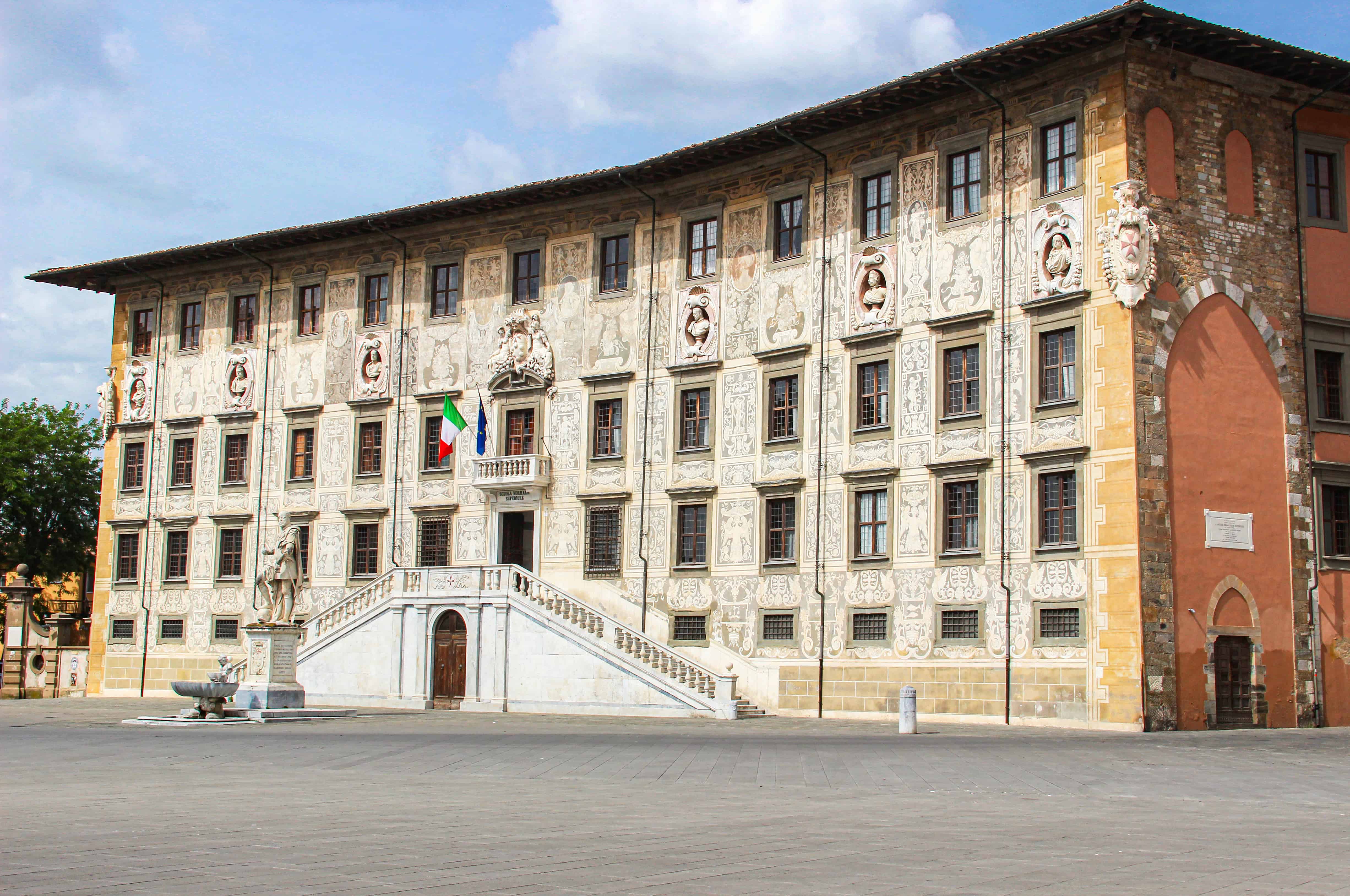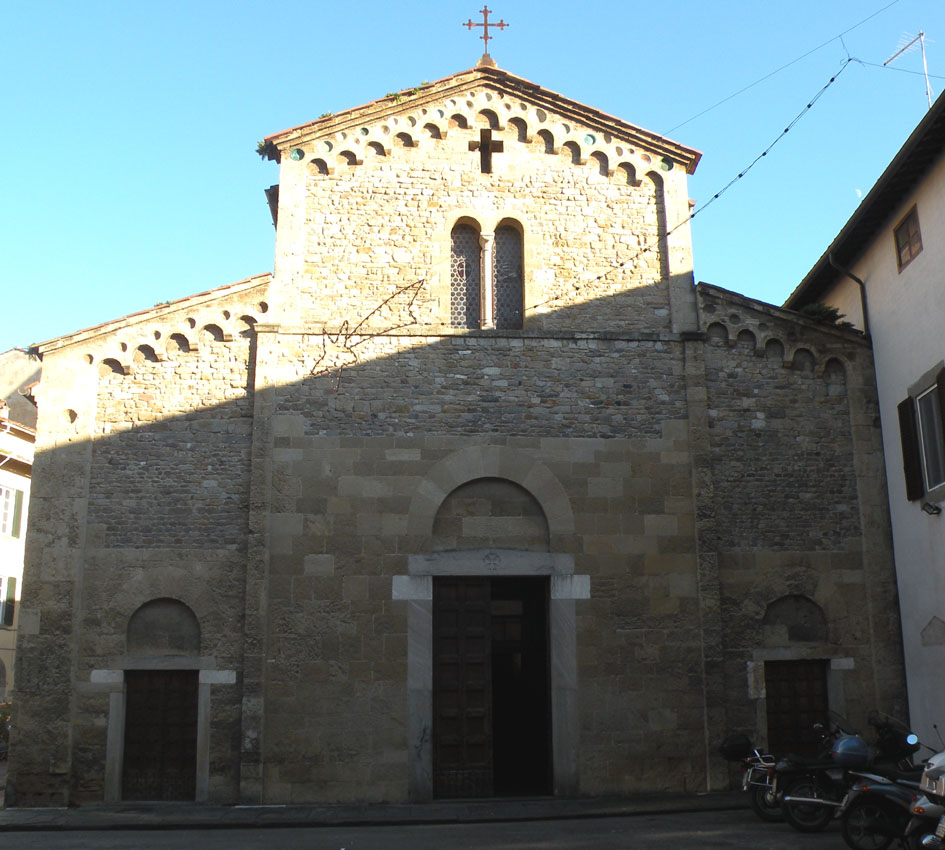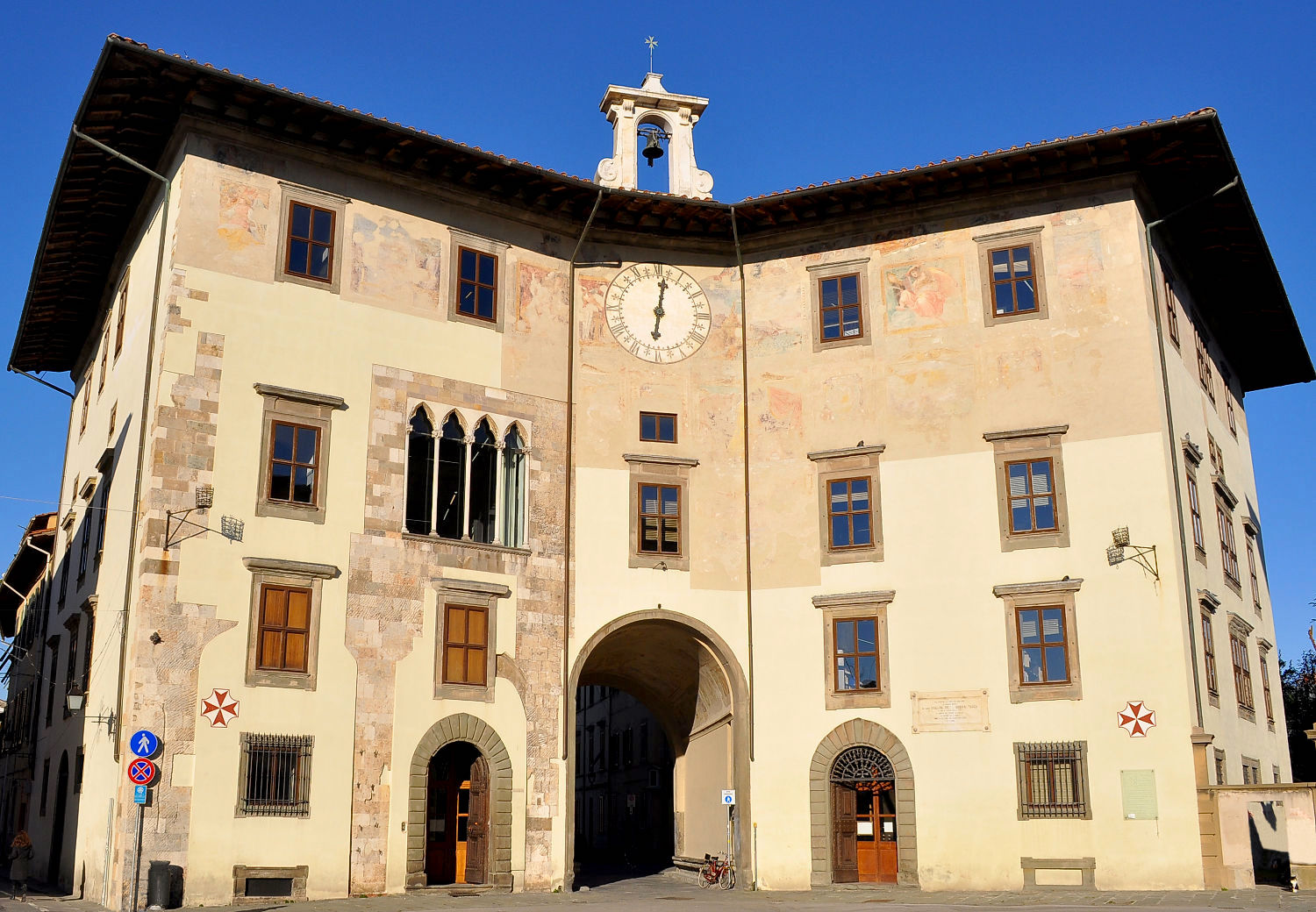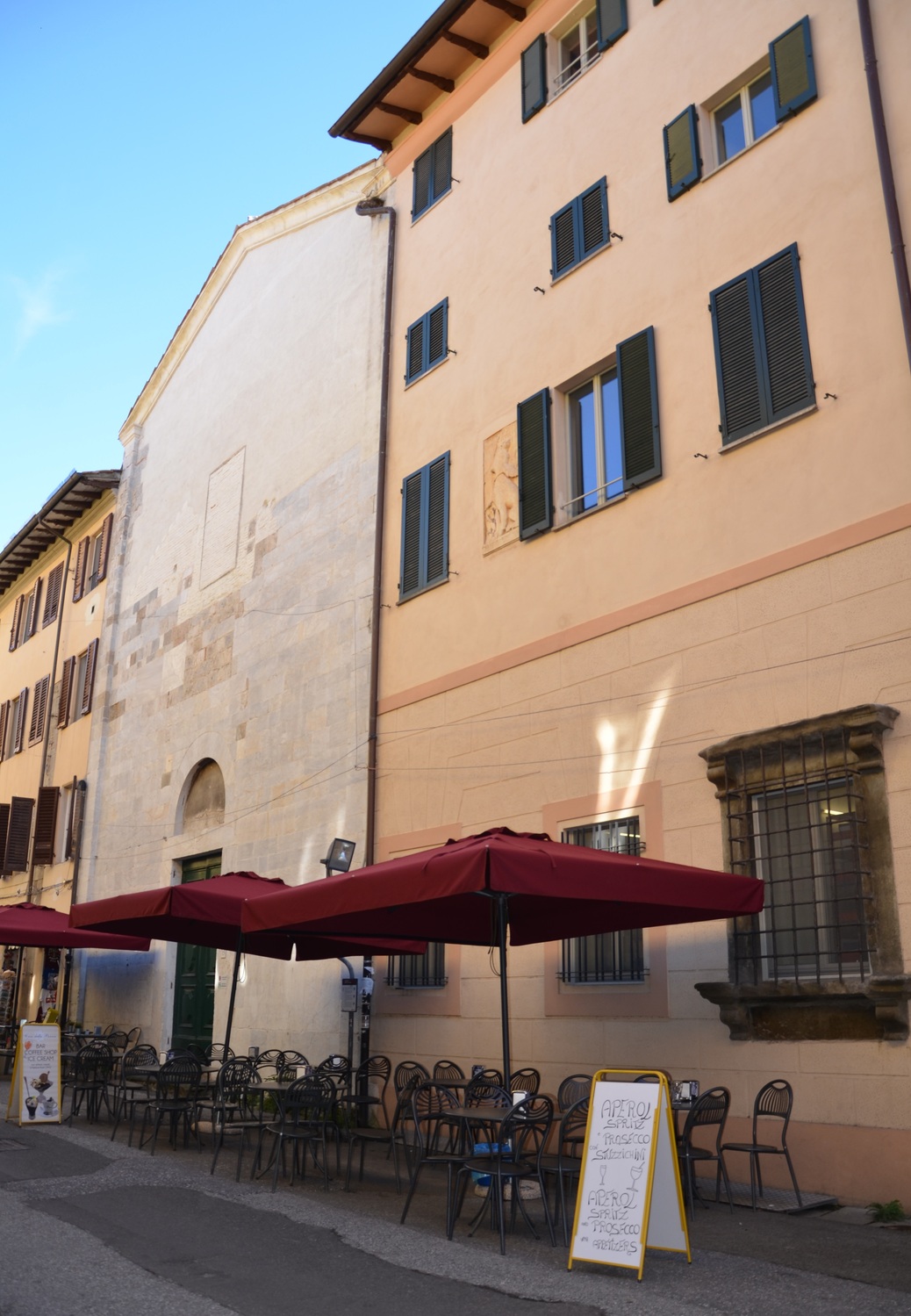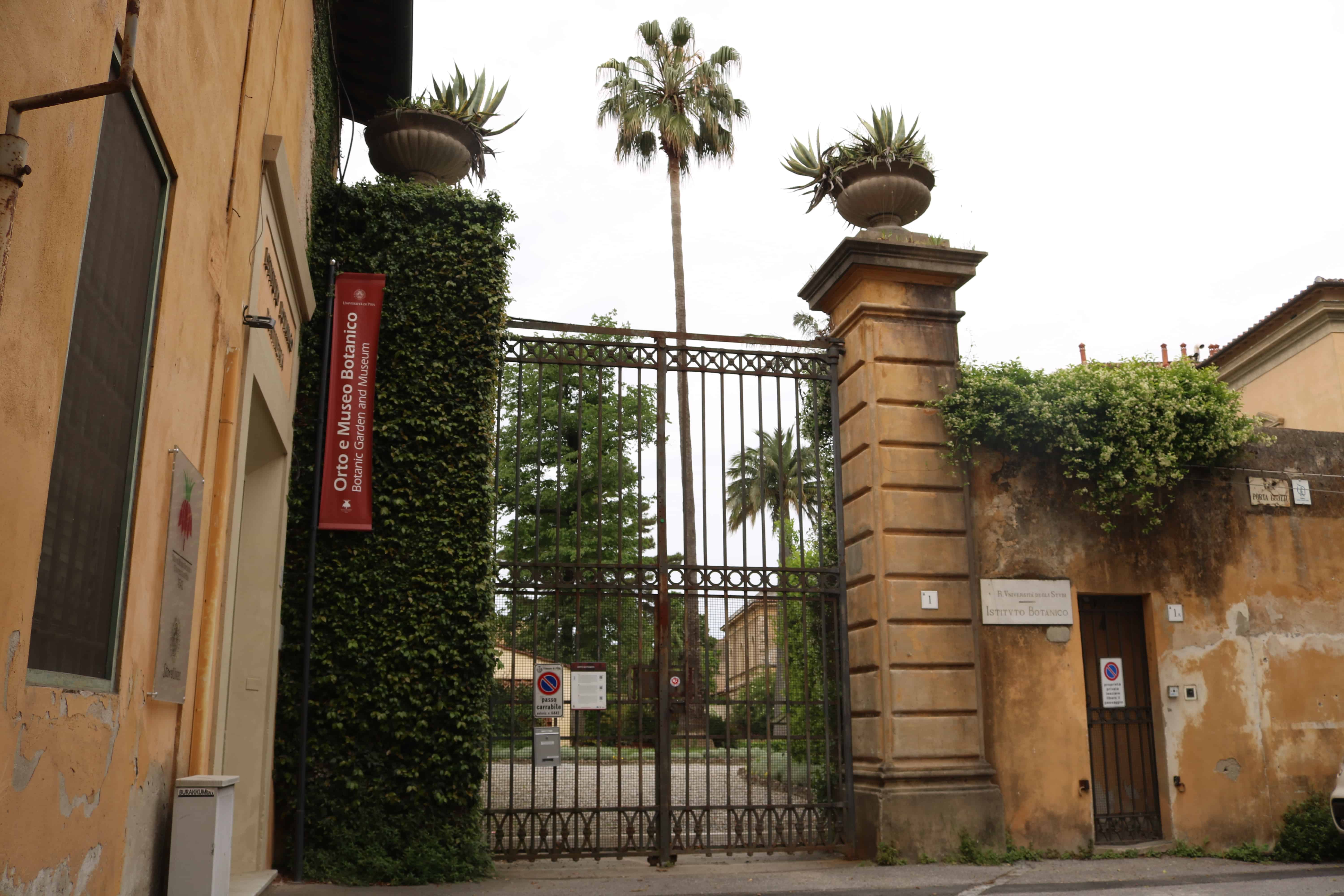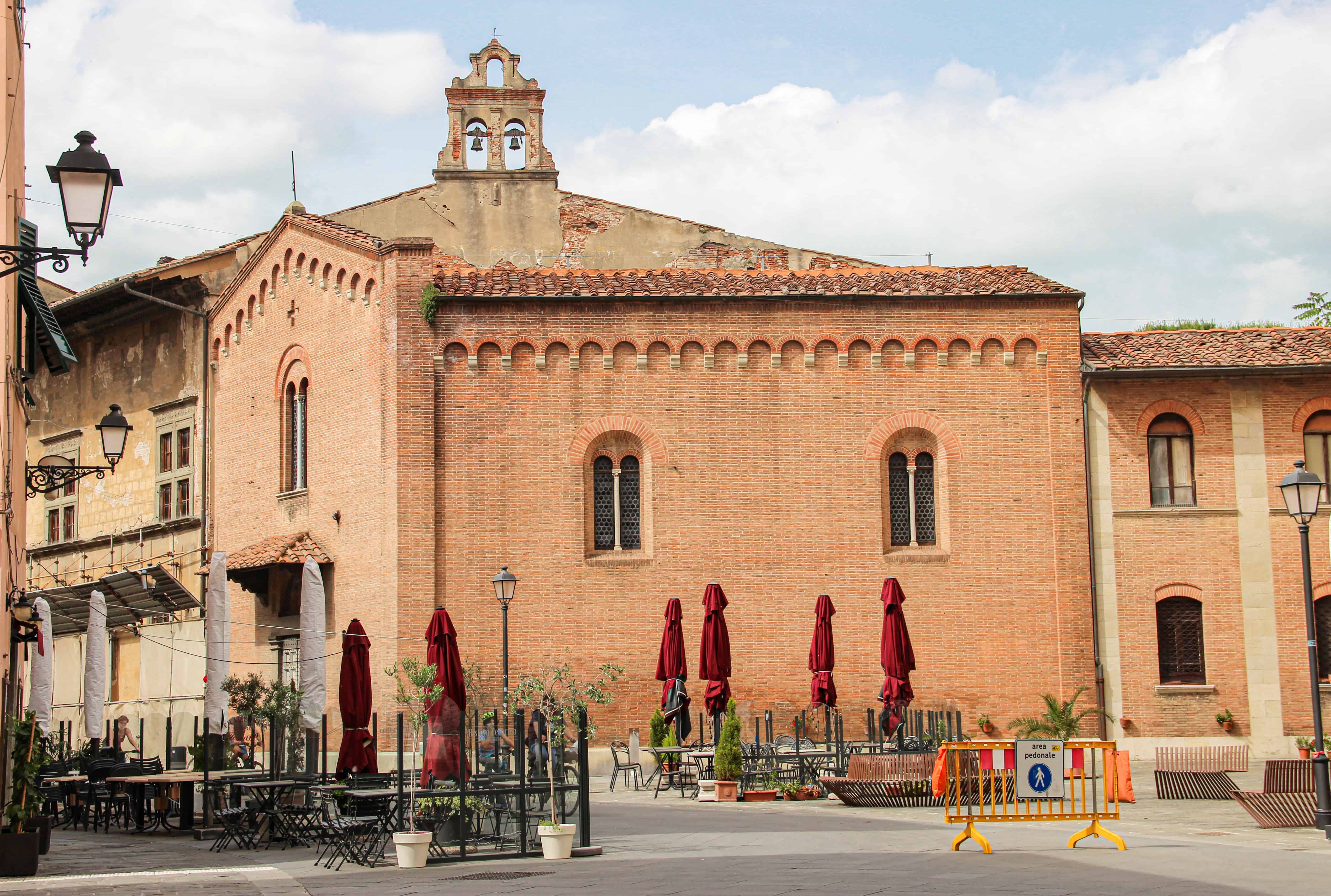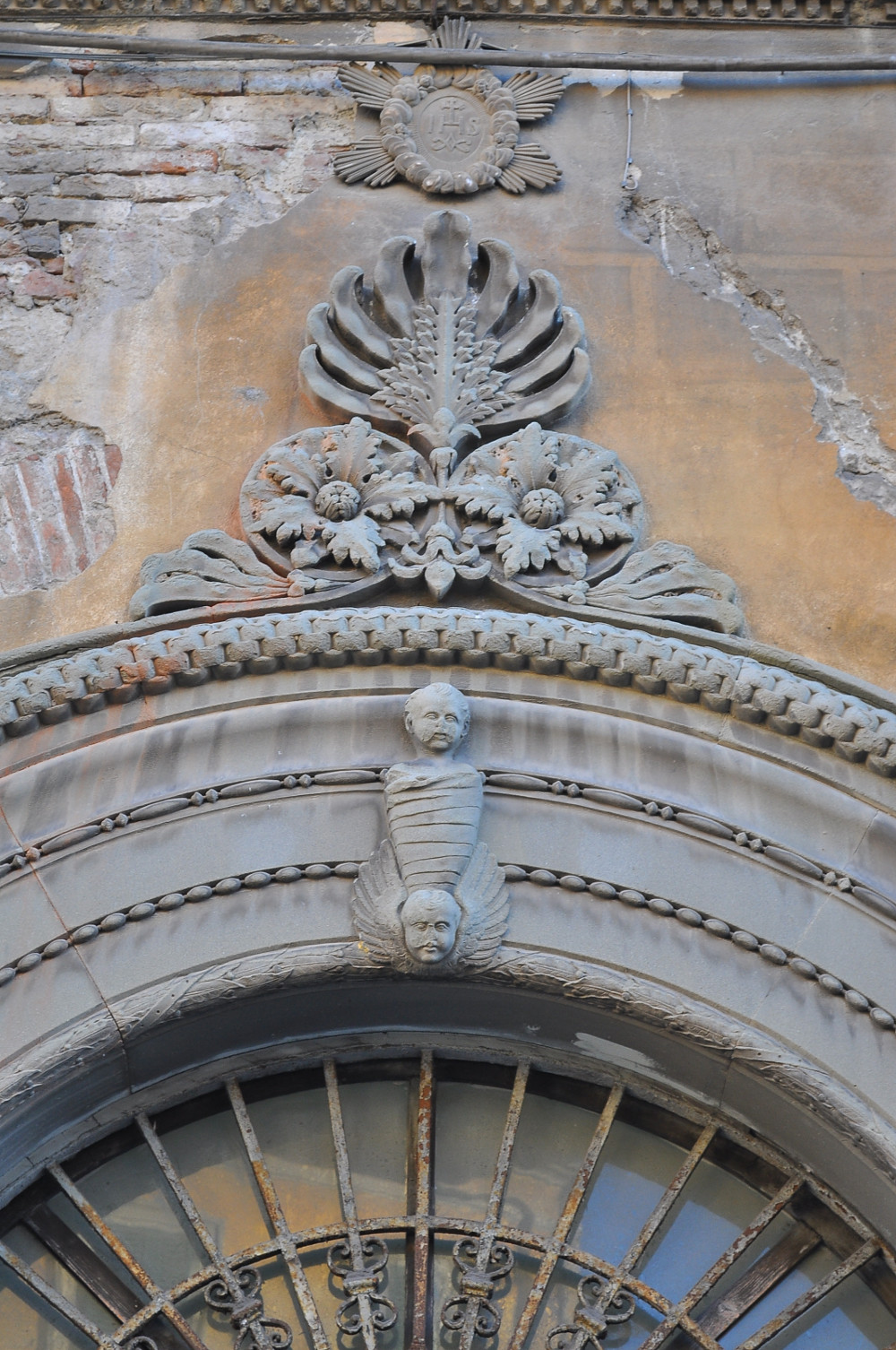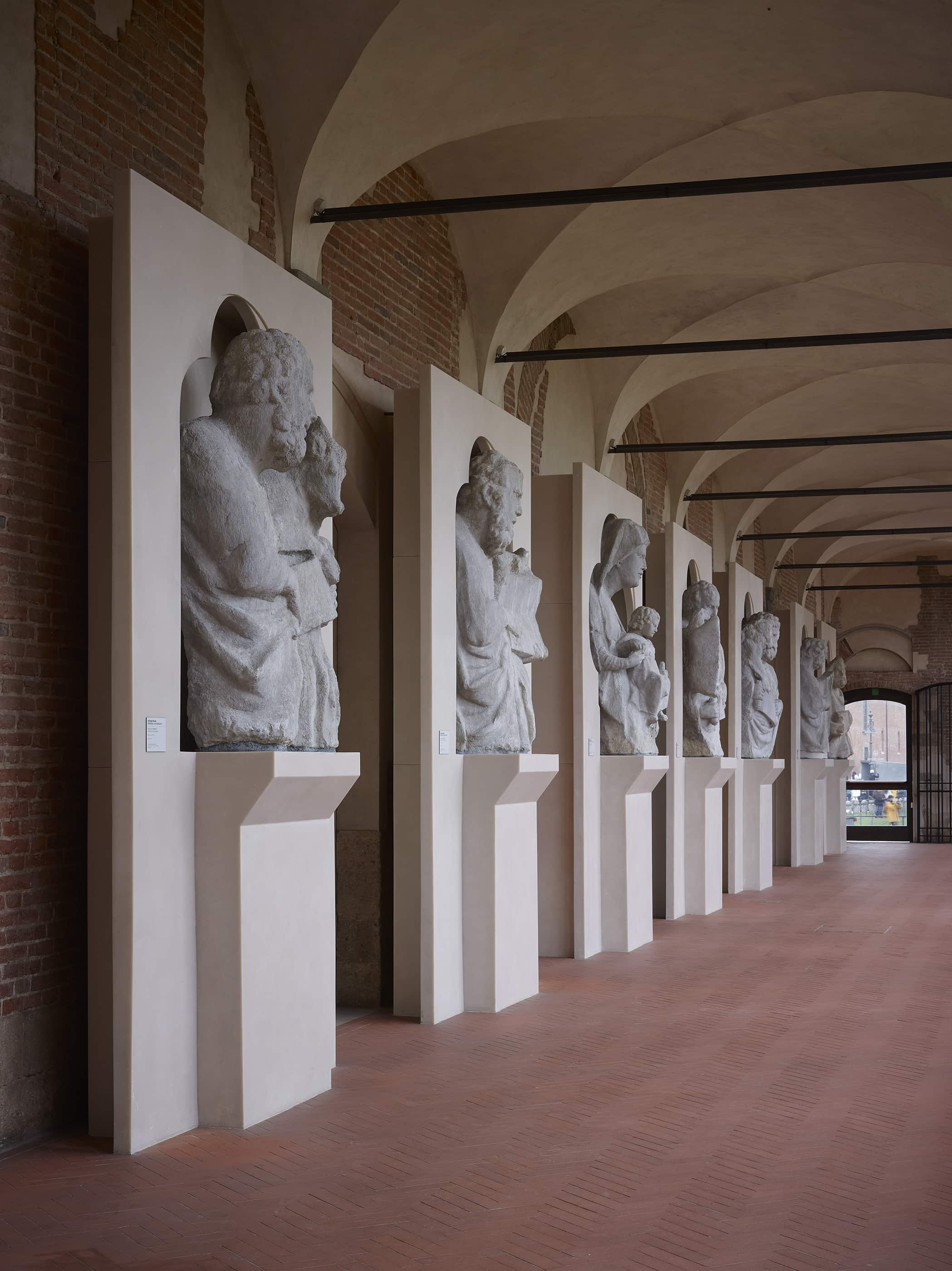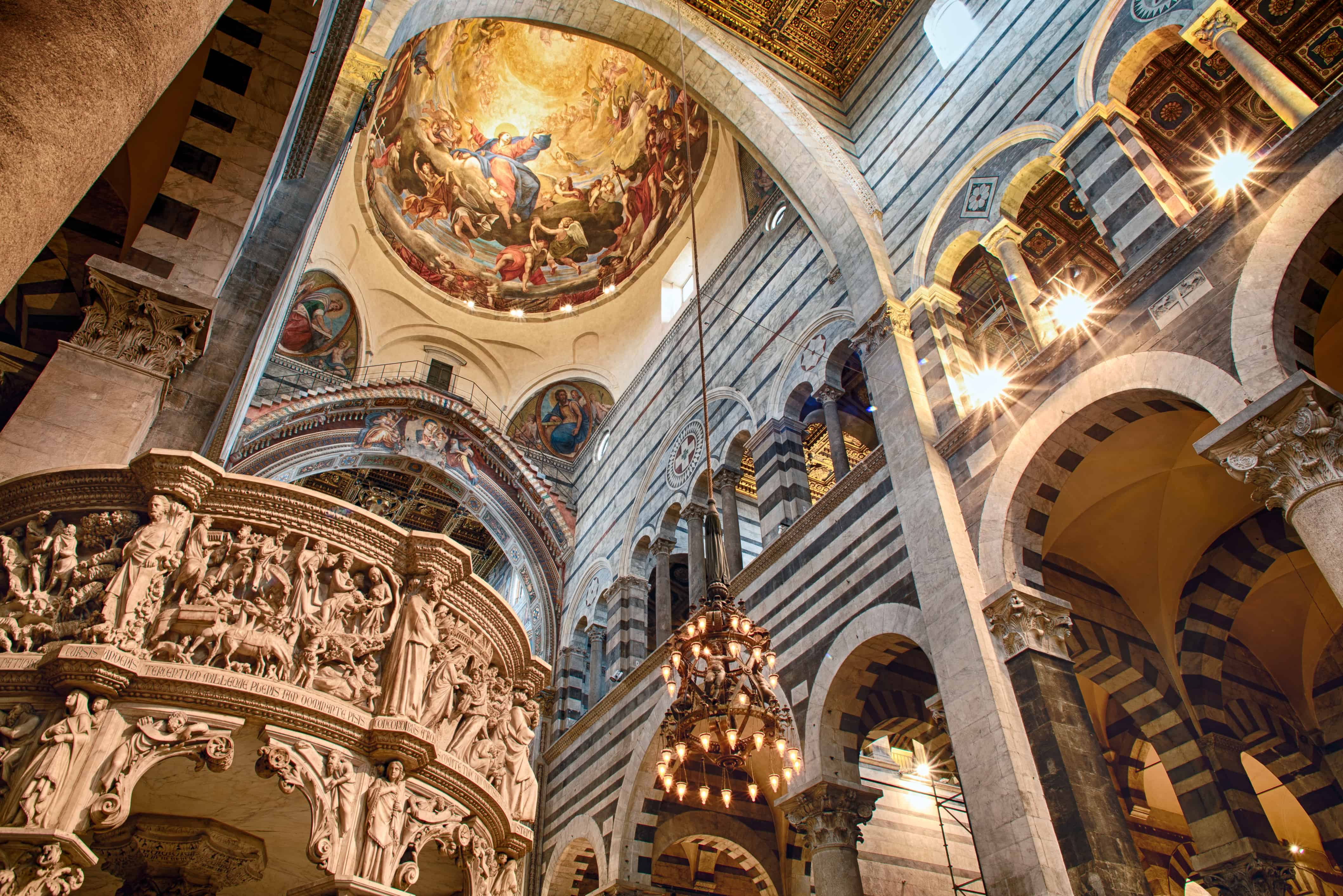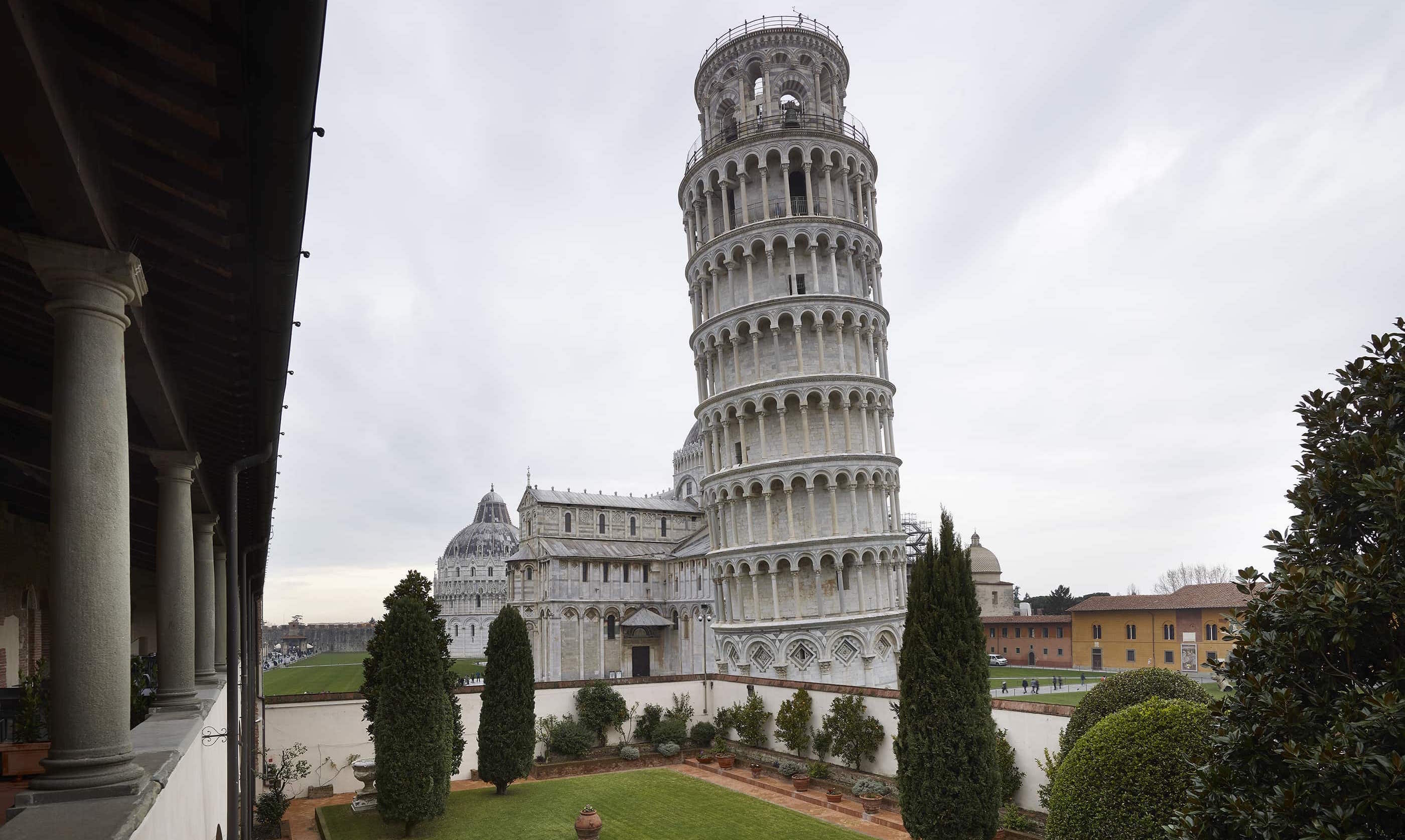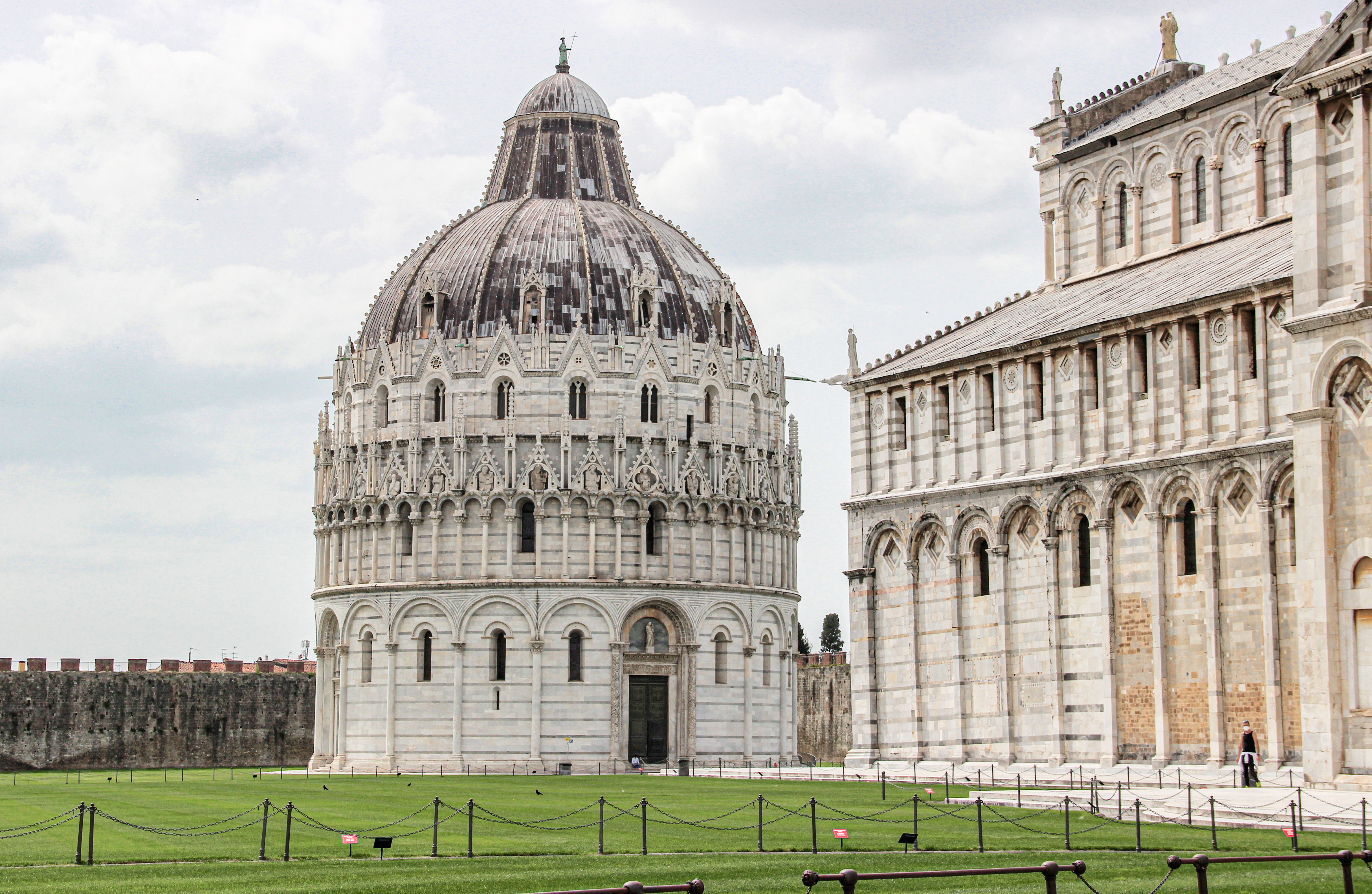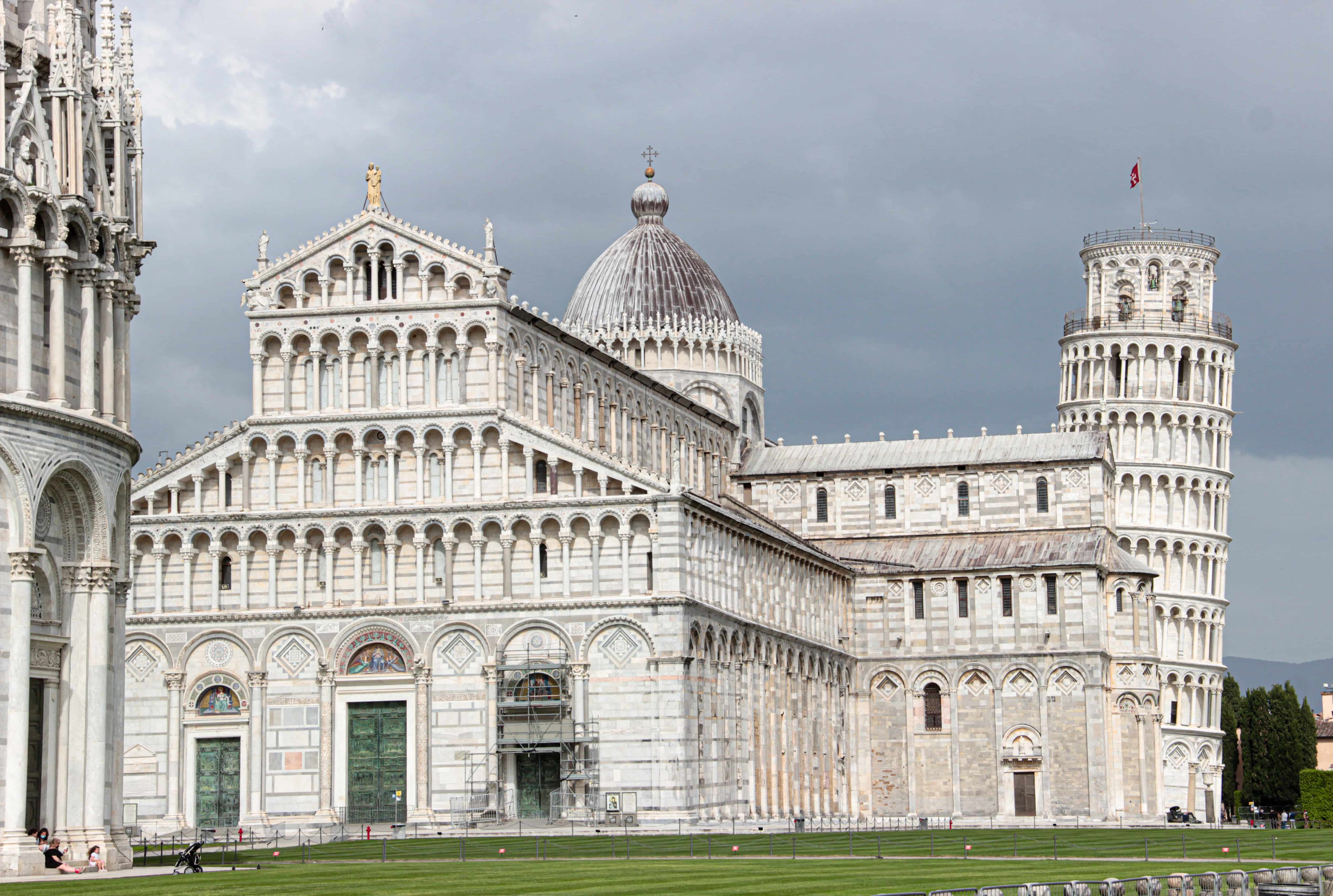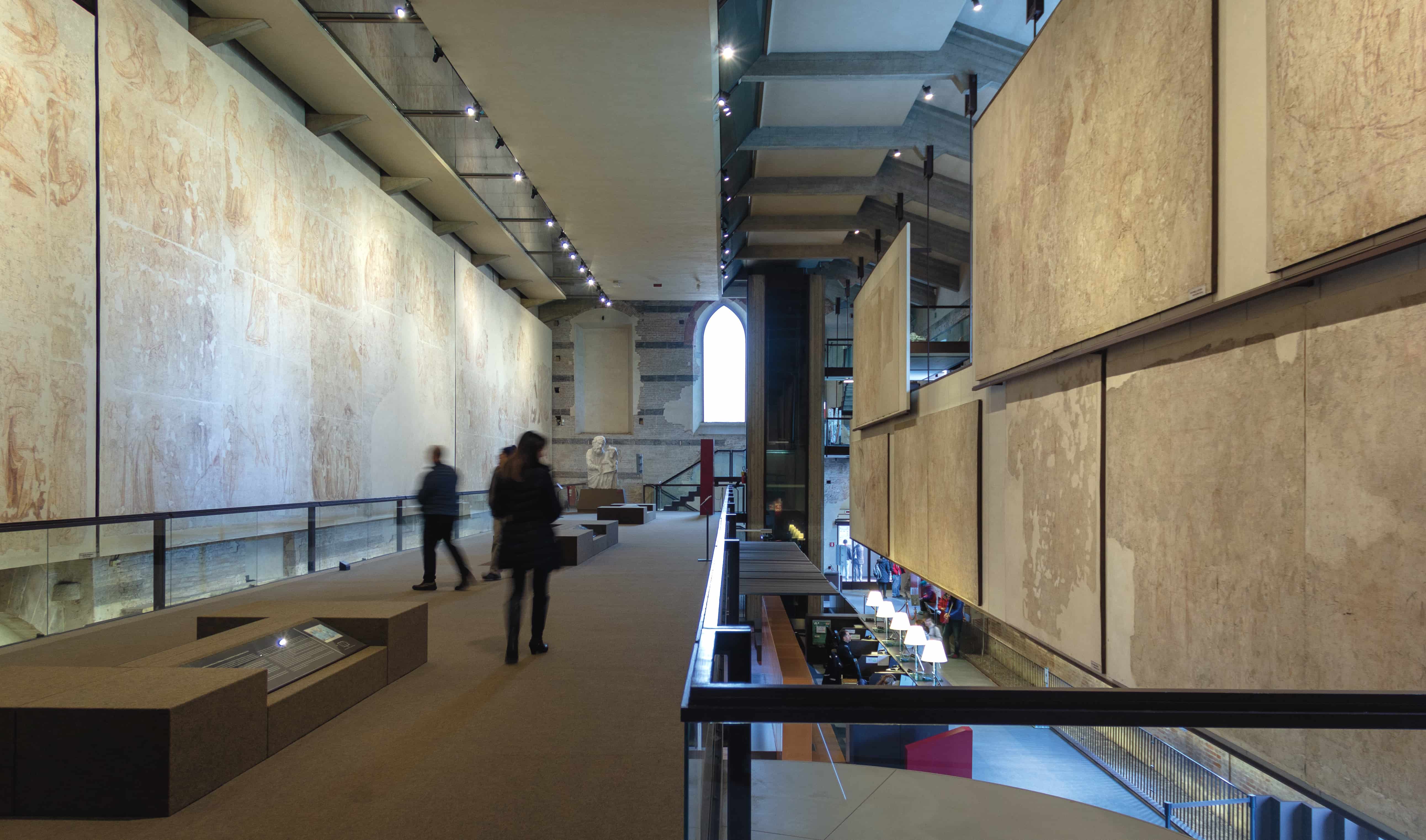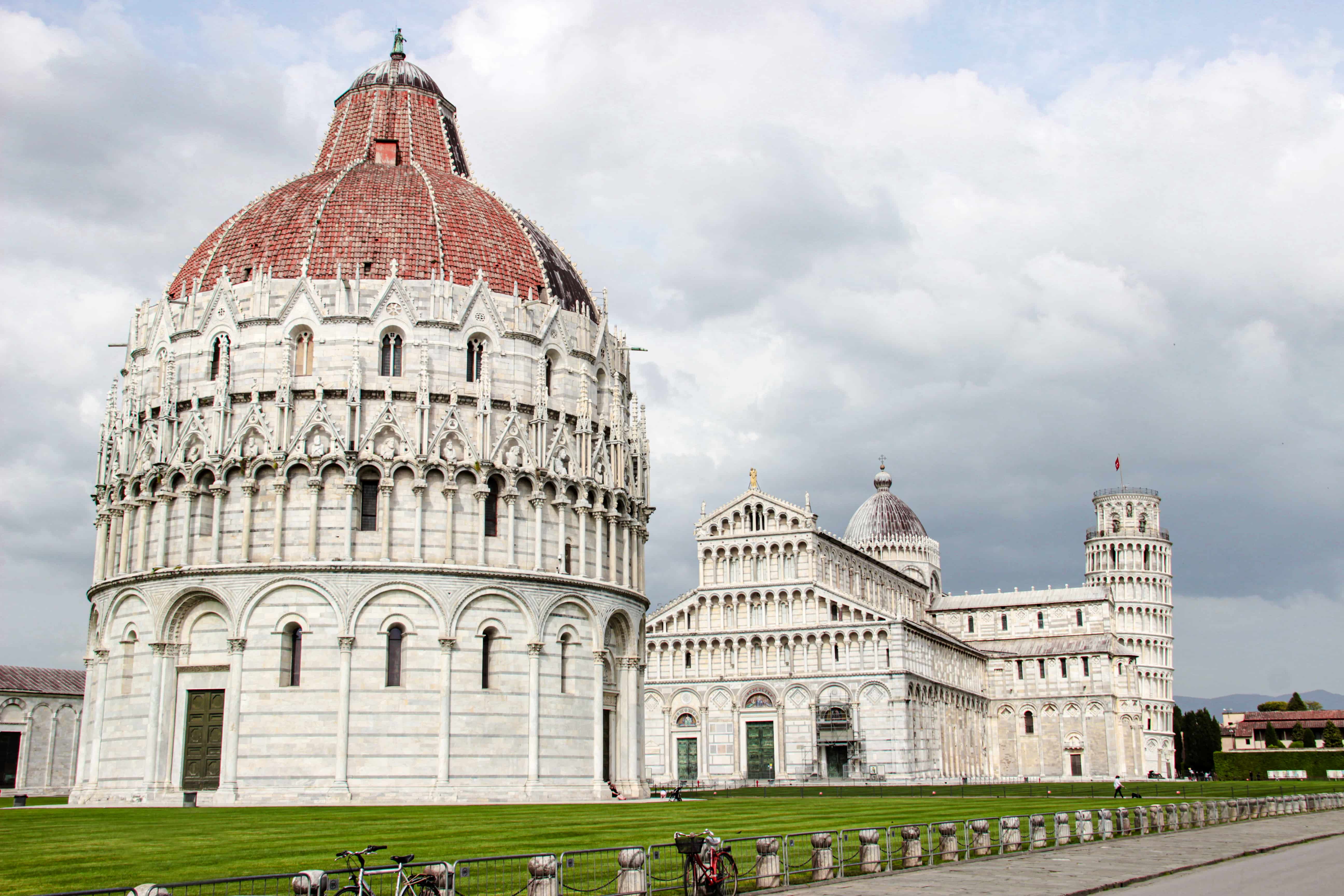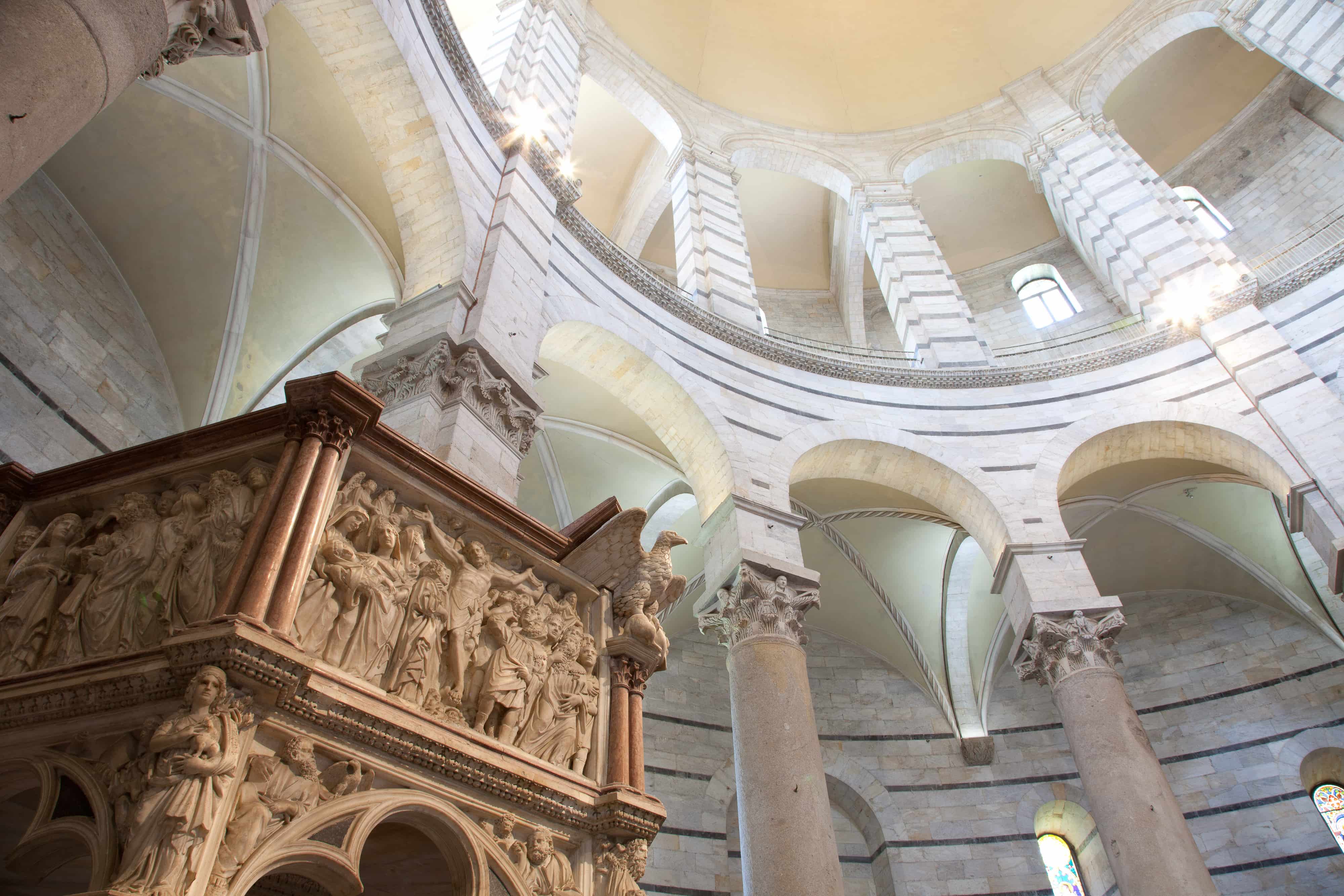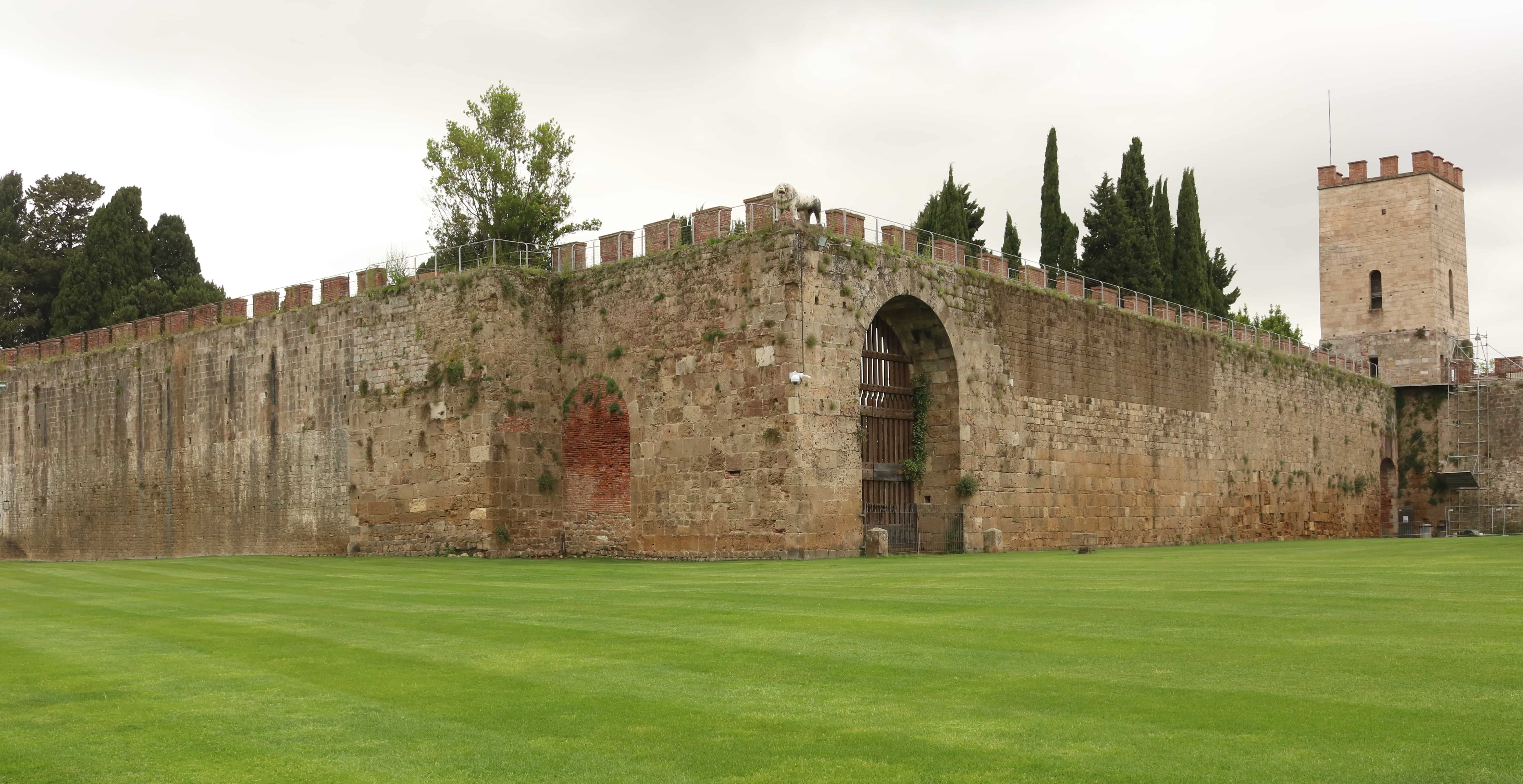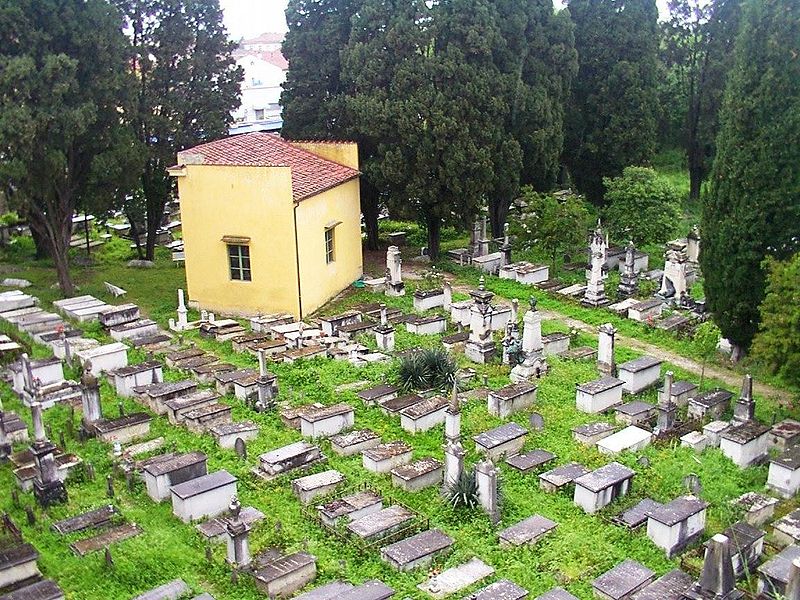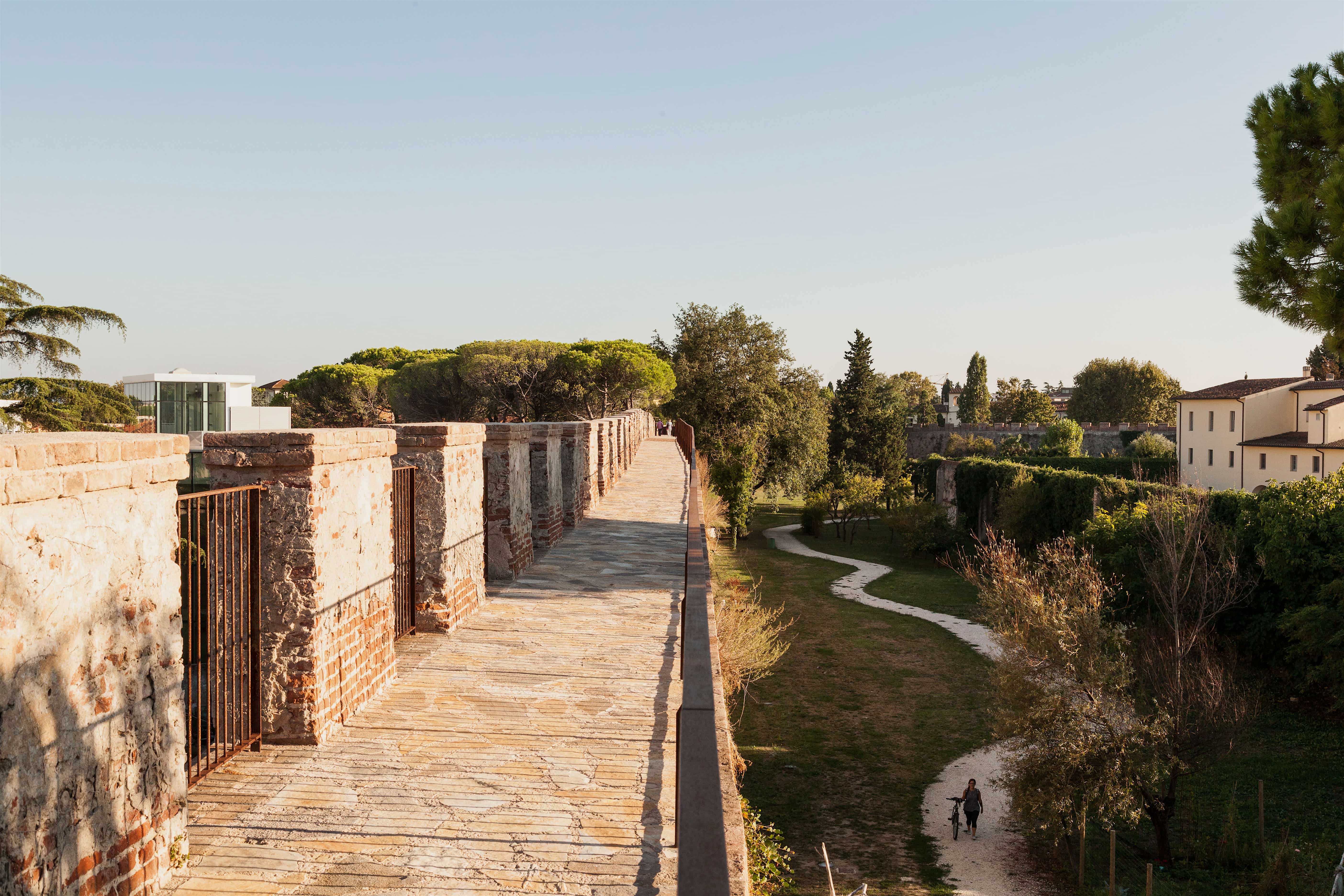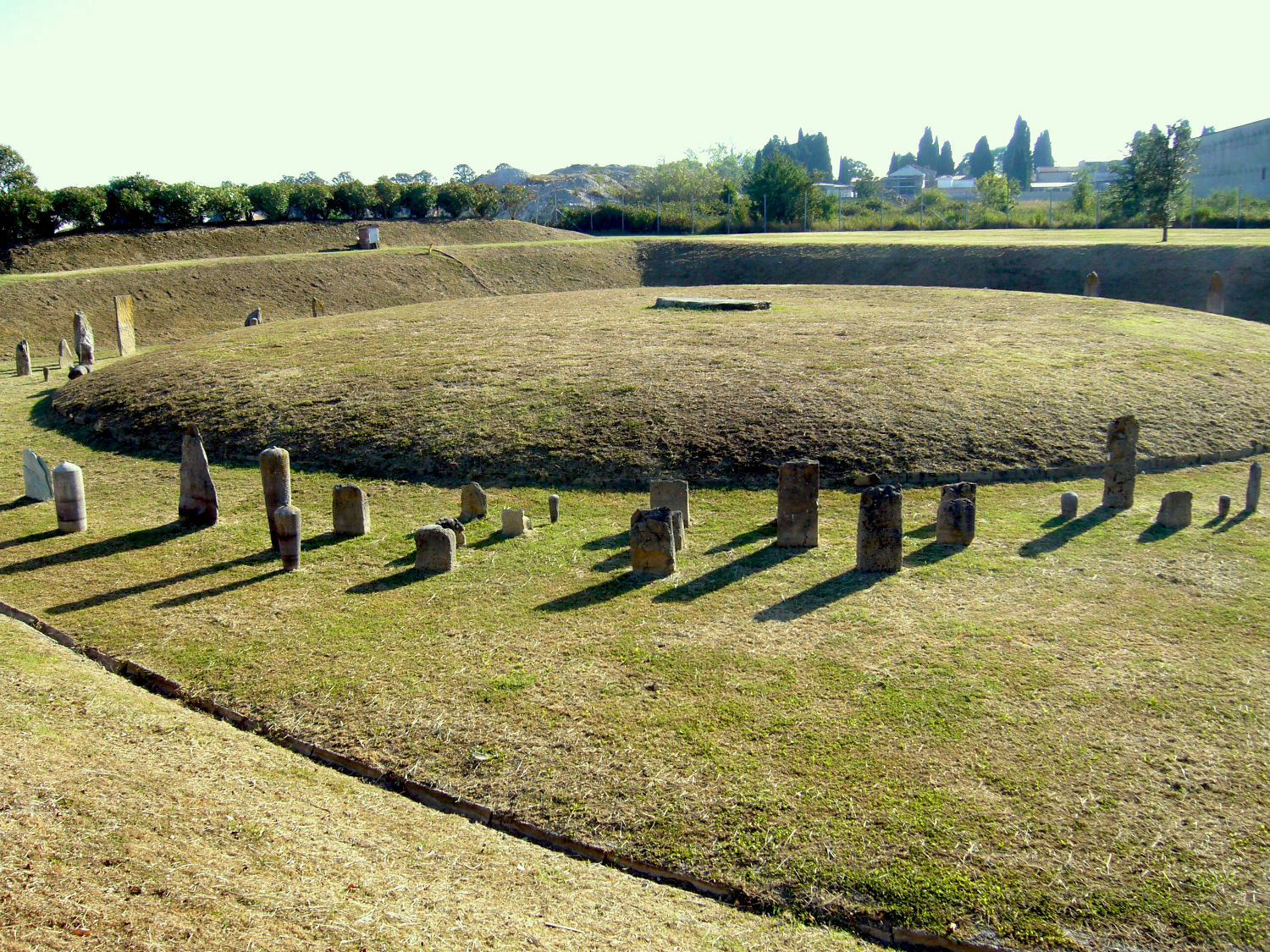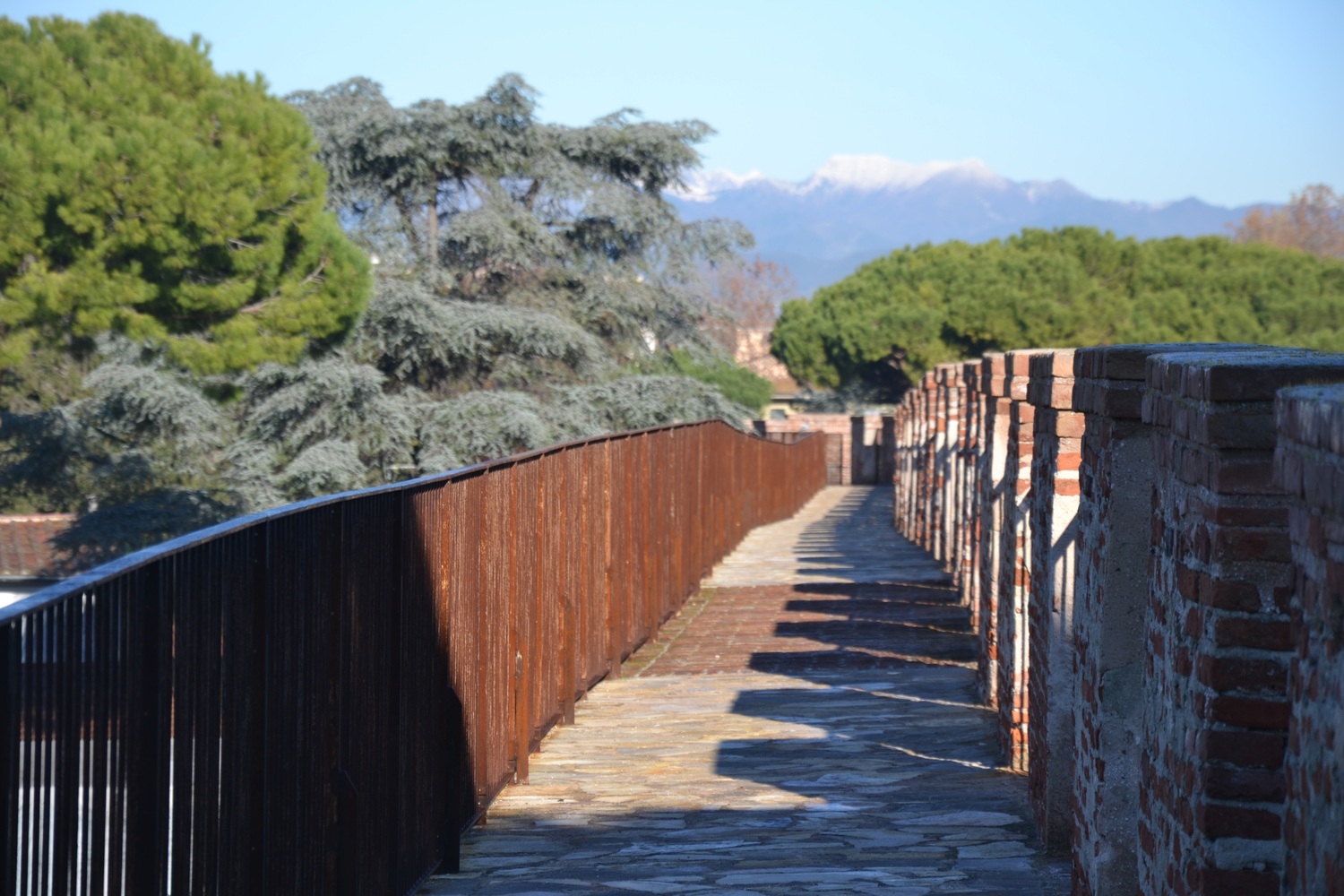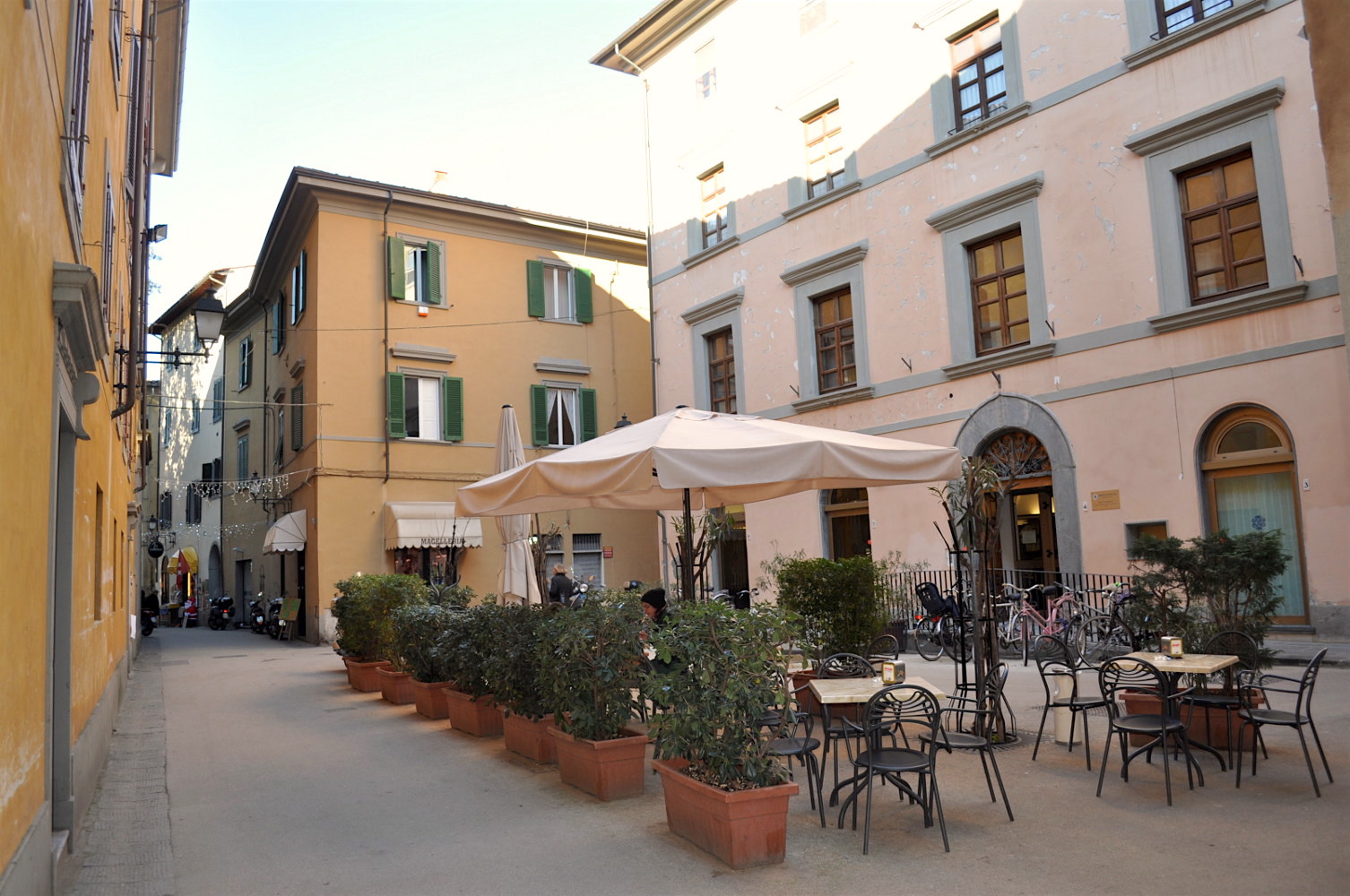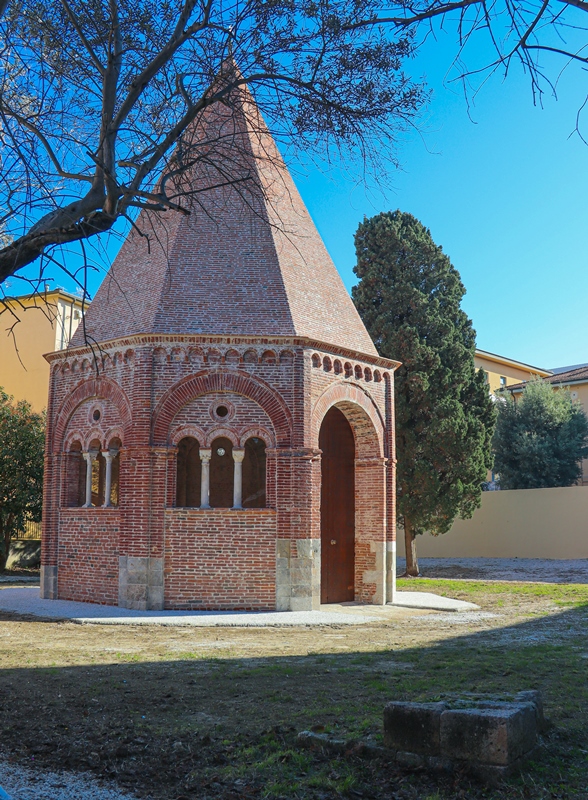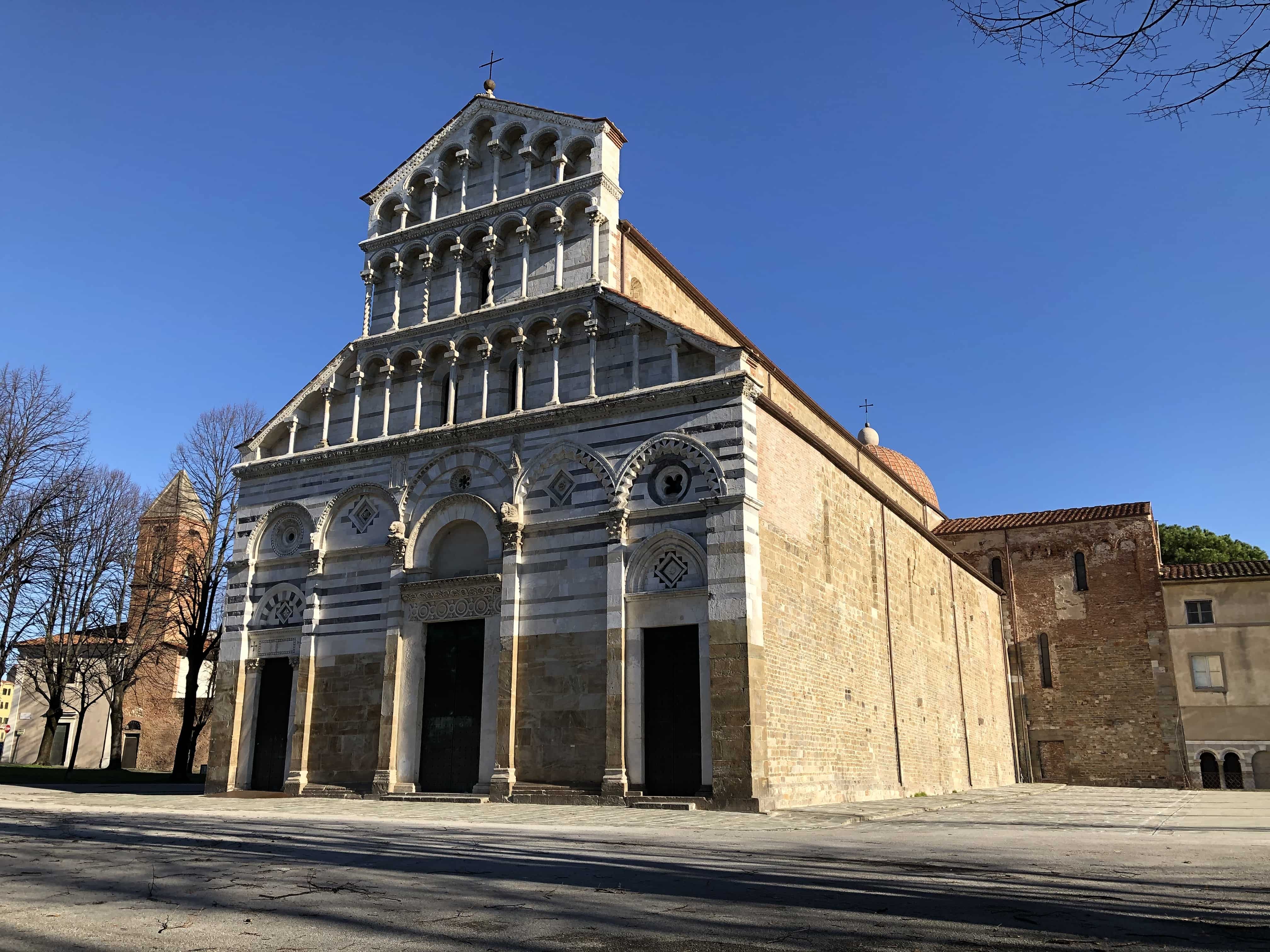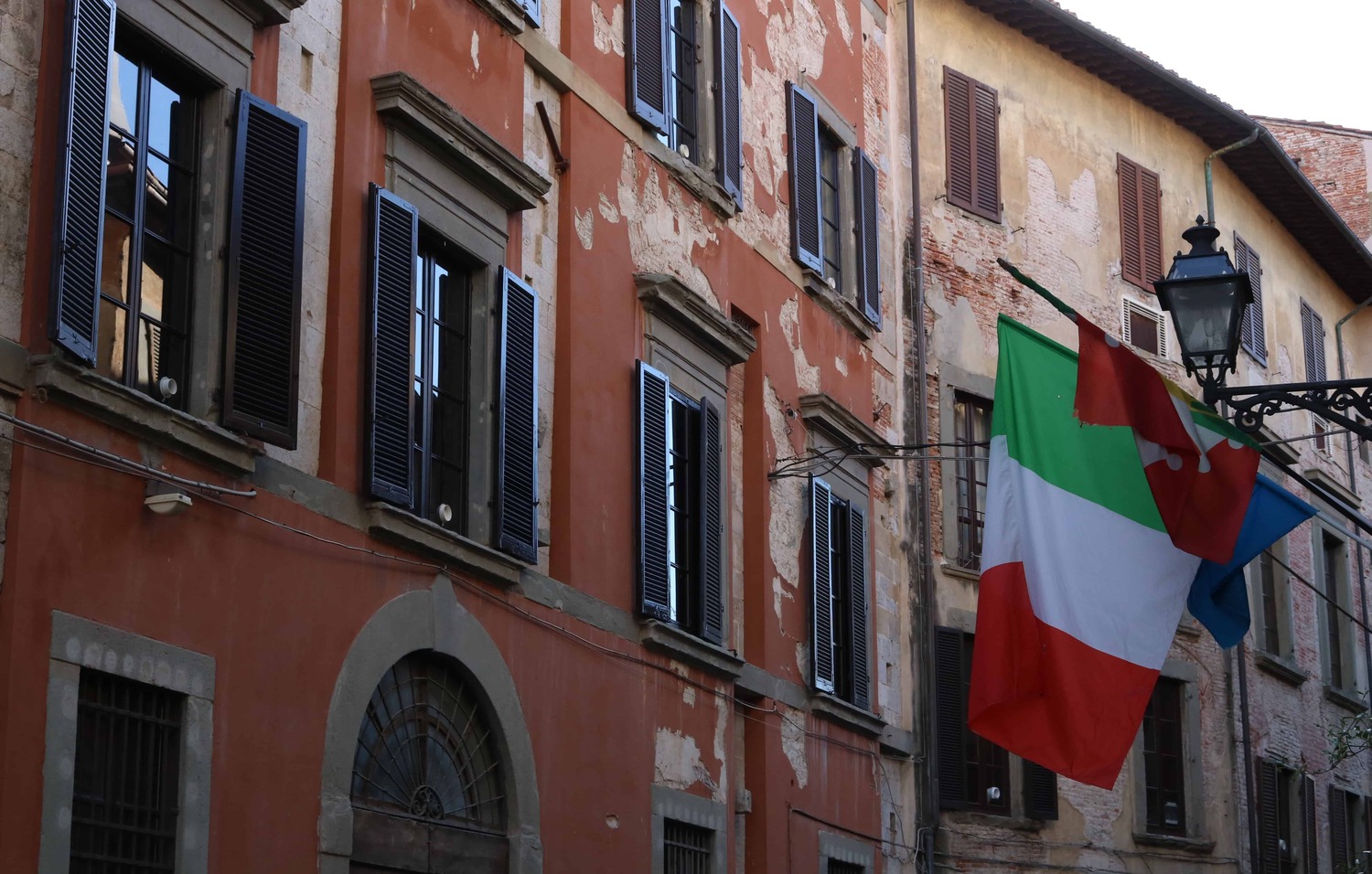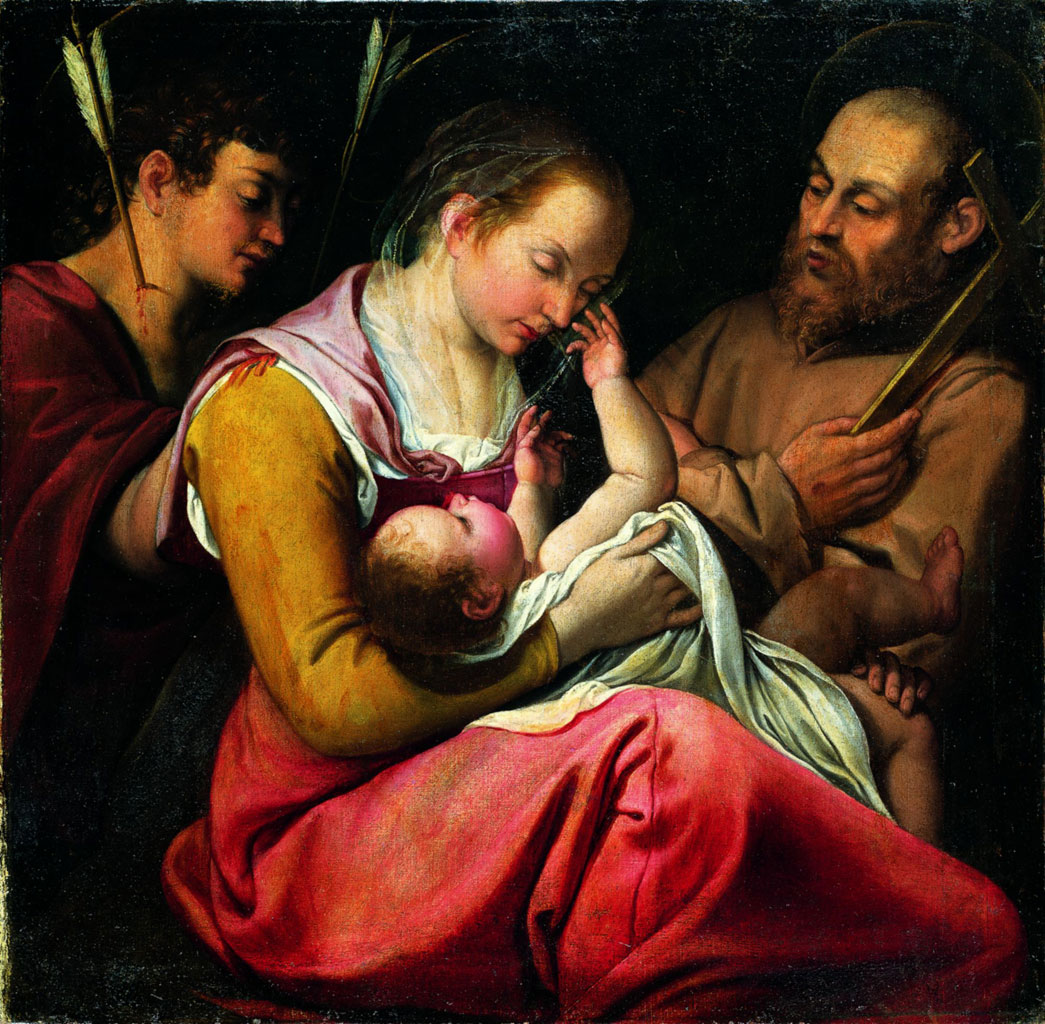Keith Haring, Tuttomondo
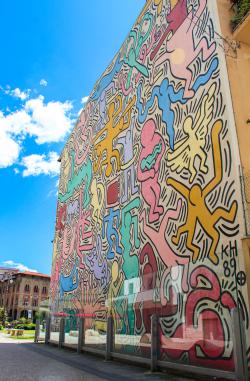
In 1989, when he painted his mural Tuttomondo on the wall of the Servi di Maria convent beside the Church of S. Antonio, Keith Haring left the final trace of his art to Pisa. This artist, born in Reading in 1958, who died in New York in 1990, soon became a name on the international art scene. His creative genius first expressed itself in America’s suburbs: Haring used chalk to draw on empty subway billboards and painted his early murals on the walls of abandoned buildings. His art was free, created for everybody. By breaking away from art galleries, the work of art entered daily life and reached the remotest parts of cities that, from being anonymous and grey, became festive and dynamic.
The many ingredients of his style owe much to cartoon drawings, industrial gadgets, the mass-media and - without doubt -to Jackson Pollock’s American informal art. Seen from the aspect of his poetics, Haring’s Pisan mural is in some ways atypical: it is sited in a city rich in works of art and not in a grey metropolitan area and was planned from the outset to be a permanent work, for which the artist had already thought of a title.
In Pisa, so rich in history, Haring found the ideal place to summarize his artistic experience: this wall, placed between a train and a bus station, took the artist back to his early experiments but left a permanent trace of his revolutionary visual language, handing on a message of universal peace and inviting the public to join him.
Twenty years after his death, Haring’s work still inspires events and happenings.

